
2024 2.21
–A FOOTBALL TOWN OR BASKETBALL TOWN?
PG. 22 HOOPS AND DREAMS: JACKSONVILLE

FEATURES COLUMNS
7
Horoscopes
Ambar Ramirez & Carmen Macri
9
Folio Weed: Way Behind Schedule
Shelton Hull
15
Weird Wild Stuff Shelton Hull
36
39

ANGELA

TERESA SPENCER

JOHN PHILLIPS

KERRY

AMBAR


SHELTON
10
Attachment Styles, What’s Yours?
Briana Pereira
13
The Curious Case Of February 29th
Jillian Lombardo
17
More Than A Game
Carson Rich 18
How Do You Benefit From My Culture & I Face the Repercussions?
Amiyah Golden
22
Hoops and Dreams: Jacksonville - A Football Town or Basketball Town?
Folio Staff


CARSON RICH

AMIYAH
MALLORY
JILLIAN LOMBARDO
MALORIE
28
Community Empowerment & Celebrating
Black-Owned Local Businesses In Jax Briana Pereira
31
They Love Me, They Love Me Not... Carmen Macri
32
Innocence Stolen, Fear Rises: Mass
Shooting Anxiety Marks A Generation Mallory Pace
34
Canvas Chronicles: Meet Wendy Sullivan, The Artist Who Made The Starry Night Out Of Hair Extensions
Su Ertekin-Taner
BEHIND THE COVER:
“Hoops and Dreams: Jacksonville – A Football Town or Basketball Town?”
Photo

3 CONTENTS VOL. 38, ISSUE 4
STAFF:
FOLIO
Publisher
PHILLIPS
General Manager
Vice President
Copy Editor/ Writer
SPECKMAN
Creative Director
RAMIREZ
Multi-media Creative/ Social Media Manager/ Lead Writer
CARMEN MACRI
HULL Writer
Writer
SU ERTEKIN-TANER
Writer
GOLDEN Writer/Photographer
Writer
PACE
Writer
Writer
BRIANA PEREIRA
ALDRICH Writer
by D’Avril Grant Designed by John Lawless
Combined Minds Ambar Ramirez & Carmen Macri
Terry
Dear Dumbs Shari &
Jaymes


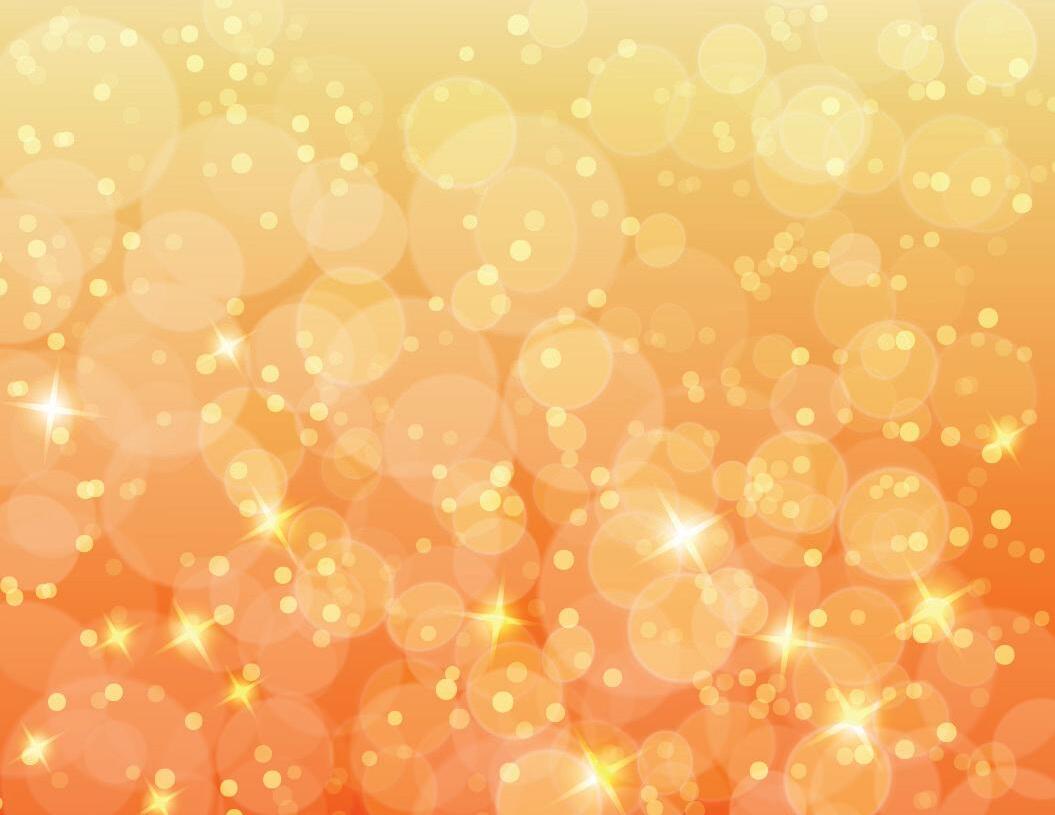



april 4th – april 14th, 2024 CLAYCOUNTYFAIR.ORG 0 4 .0 4 .202 4 TICKETS ON SALE NOW! PRICES GOOD THRU APRIL 3RD. MUST PURCHASE TICKETS IN ADVANCE FOR DISCOUNT! midway rides livestock exhibits fantastic fair food FOR VISITOR INFORMATION, VISIT: WWW.EXPLORECLAY.COM 2024 ENTERTAINMENT SCHEDULE 4/4 Vanilla Ice • Tone Loc 4/5 Tyler Farr • Chapel Hart • Gracie Tyler 4/6 Diamond Rio 4/7 Martina McBride 4/8 For King & Country 4/9 Bret Michaels 4/10 Concert 2pm: Oak Ridge Boys 4/12 Silent Disco Goat Party 8pm 4/13 Tractor Pulls 8pm 4/14 Tractor Pulls 8pm $ 10 ADULT FAIR GATE TICKETS PRE-SALE PRICE $ 20 RIDE ARMBANDS NOT VALID SATURDAY $ 6 SENIOR & KIDS FAIR GATE TICKETS PRE-SALE PRICE Scan Here for Information & Promotions:
WE WANT TO HEAR FROM YOU!
SUBMIT MAIL TO

BOUQS & BRICKS BOUQUETS BRICKBATS
Furyk & Friends Constellation 2023 event for generating more than $1 million for community and charity partners. Constellation’s funding supports several deserving North Florida charities including the MaliVai Washington Youth Foundation, First Tee – North Florida, Blessings in a Backpack, St. Johns Riverkeeper and Beaches Habitat for Humanity. The tournament also benefits a number of other local organizations during the year including Wolfson Children’s Hospital Family Links Program, Operation Shower, Jacksonville Humane Society, Hope for the Holidays, K9s United, Guardian ad Litem Foundation, KIPP Jacksonville Public Schools, Walk Off Charities, and more.

The City of Jax…After a long 3 year wait construction and repairs to Friendship Fountain are finally completed. What some may not know is that this attraction was the world’s largest and tallest fountain when it opened in 1965. It still remains one of the largest in the United States. As result it has been one of Jacksonville’s most recognizable and popular attractions. The renovation cost $7.95 million so let’s hope it brings that much and more to Jax tourism dollars.
To Rory Diamond. If it was not bad enough that Councilman Diamond led the charge to allow JSO’s sheriff approval power of City settlements, Diamond (a lawyer) completely showed a lack of any understanding of qualified immunity while essentially using racial tropes to claim victims of police brutality needed to seek unwarranted $5000 settlements because of their socioeconomic disadvantage. Shame on you.

5
TEAM@FOLIOWEEKLY.COM T H E MAIL

HOROSCOPES
Words by Ambar Ramirez & Carmen Macri
ARIES
It’s time to spread those wings and fly, little social butterfly. February is not the month to reset and recharge. Especially with Mars meeting Pluto in Aquarius, your social battery will be at an all-time high. You might be feeling a bit restless due to this, but don’t worry, you’ll find an outlet for all that energy.
TAURUS GEMINI
February is all about getting ahead of the curve. As a Taurus, that means you will be taking great leaps creatively and romantically. This month also brings a lot of opportunities in the career field. But with all this positivity and forward thinking, obstacles might get in the way. Remember to stay focused and balanced.
February will be a month of escaping your comfort zone. While you tend to keep things private, the planets will urge you to step into the spotlight. You will find it easier to share what is on your mind with your peers. Don’t shy away from it; it’ll do you no good.
CANCER
Aquarius season is a transformative time for you, Cancer. You’ve been making a lot of changes emotionally and now it’s time to put all that you’ve learned to the test. You may find that having conversations move a lot more smoothly now. Because of that (and with Venus moving into Pluto), your relationships will be all the stronger.
LEO VIRGO
With the Sun moving into Pisces on Feb. 18, you will find yourself feeling more selfless than usual (crazy, we know). With this newfound selflessness, remember to still be wary of those who wish to take advantage of your heart.
Drama in the air? Perhaps, but let’s brush that aside. When Venus enters Aquarius on Feb. 16, a sense of relief accompanies its arrival, providing you with clarity — just in time to address any lingering toxic relationships from the past. Clear away the negativity to create space for the positive things ahead.
Trouble in paradise? Sometimes the problem is them, but this time the problem is definitely you. Take a close, honest look at yourself and assess whether you’re content with who you’ve become. The saying holds true: You can’t truly love others if you don’t love yourself. Your relationships, whether platonic or romantic, mirror your inner self. Consider this an opportunity from the universe to reevaluate and make positive changes. Seize it and use it wisely.
LIBRA SCORPIO
Mars, your ruling planet, will remain in Capricorn for most of February leaving you feeling lethargic. You may be feeling like your life is repetitive with no way to break the cycle. Take a deep breath and keep moving forward. Ruts are normal. It is only a matter of time before you find yourself in one.
SAGITTARIUS
Venus enters your 3rd house of communication on Feb. 16, and unfortunately, it may bring some sour feelings with it. Instead of waiting for others to make plans, your challenge for the month will be taking the initiative. You can’t be disappointed when you’re the one making the plans, right?
CAPRICORN AQUARIUS
The celestial love birds, Mars and Venus, are both in Capricorn this month, just in time for Valentine’s Day. Whether you seek companionship, a relationship, or anything in between, February is the month to start kindling. You’ll find yourself feeling quite irresistible.
While everyone was celebrating the new year last month, you celebrated it on Feb. 9, the year’s only Aquarius New Moon. Now, all those resolutions you wrote down for the new year may actually come to fruition. Being passive is so last year. Delve into the fiery side and get ready for a lot of growth and change.
PISCES
You may be feeling like you’ve been swimming upstream all month, Pisces, and you very well might be. February is not the month for world domination, so you need to reserve your energy before you burn out. Take it easy the remainder of the month; March is close enough.
7

FOLIO WEED

WAY BEHIND SCHEDULE
Words by Shelton Hull
Last month’s column noted that the U.S. Department of Health and Human Services had recommended last Aug. 29 to remove marijuana from the DEA’s list of Schedule I narcotics, and a number of readers were curious to know what that actually means, in words and actions related to legalization. And the answer to that is: nothing.
The DEA’s drug scheduling actually has five parts: I (“Drug is not safe to use, even under medical supervision”), II (“Abusing the drug can cause severe physical and mental addiction”), III (“Abusing the drug can cause severe mental addiction, or moderate physical addiction”), IV (“Abusing the drug may lead to moderate mental or physical addiction”) and V (“Abusing the drug may lead to mild mental or physical addiction”).
It’s really a mess, and it could do with substantial revisions from the medical community — that is, if drug policy was actually influenced by the medical community, which it is not, and has never been. The seeming specificity of their definitions belies the real-world malleability of those terms, and that’s where the trouble began for countless Americans over the past 52 years.
Schedule I currently lists hundreds of different substances, mostly opioids and their derivatives, which are the main cause of most overdoses in America in this century with that process, of course, accelerating as more drugs are being laced with fentanyl over the past decade, increasing the lethal potential of everything else. It also includes depressants, specifically Quaaludes and GHB.
Schedule I narcotics are supposed to be the worst of the worst, and the placement of cannabis on that list has been a running joke since your parents were kids. Now, that applies no matter how old you are, because it resulted from the infamous Controlled Substances Act of 1970, which, for my money, is one of the 10 most disastrous pieces of legislation ever signed into law in this country. Signed by Richard Nixon, a man known for bad decisions, it was the beginning of the Drug War, as we know it.
Marijuana was targeted specifically because of its association with liberals and minorities, which is exactly how it always was, going back to the Marijuana Tax Act of 1914, where the plant was first made illegal. In 1970, however, there were distinctly political implications, like the anti-war movement and a civil rights movement that had gotten much angrier after the government helped kill (and helped cover up killings of) many of the movement’s key leaders in the 1960s. The legislation went hand-in-hand with COINTELPRO, a top-down systematized effort to destabilize groups they didn’t like — and it worked.
Reagan/Bush escalated in the 1980s, then Clinton escalated in the 1990s, and that is the status quo that persisted through much of the past 30 years: mandatory minimums and three-strikes laws, no-knock warrants and probable cause, all applied with the subtlety of dry rub on a brisket. The result? Thousands of people dead, hundreds of thousands imprisoned, millions and millions of years’ worth of time served, for nothing — for no good reason at all. HHS has now washed their hands of it.
(Schedule I also includes most types of hallucinogens, including mescaline and peyote, though it’s worth noting that psilocybin mushrooms have been decriminalized on local levels in Denver, Oakland, Ann Arbor, Northampton, Cambridge, Santa Cruz and Seattle, as well as in Oregon, Colorado and, ironically, Washington, D.C. itself. In most cases, efforts to decriminalize cannabis helped lead directly to those changes, all of which have happened in just the last few years. Psilocybin and MDMA were both given “breakthrough” status by the FDA in 2017, and Glenn Greenwald’s magazine “The Intercept” published material in 2022 suggesting that MDMA might be approved for official therapeutic use by the FDA this year. In the cases of MDMA and psilocybin, as well as cannabis, the U.S veteran community has played a crucial role in both advocacy and organization.)
Elections, especially big national ones like these, always present great opportunities for citizens to advocate even more effectively than usual on behalf of the causes they care about. With legalization of cannabis likely to make the Florida ballot in 2024, cannabisseurs constitute a voting bloc that all sides will definitely be reaching out to, in service of their own candidates.
Democrats are already doing that, since their current state chairwoman, Nikki Fried (one of my favorite people ever), oversaw that industry as secretary of agriculture in Florida from 2019 to 2023. Business really began in January 2015, but the period of greatest growth occurred under her watch. If legalization does happen, it will instantly push the market here into the low ten figures, and it will happen because of her efforts, then and now, and that’s good news for the White House. Gov. Ron DeSantis also has every right to take credit for that growth — fair is fair — but he probably won’t, which is also good news for all of us.
9
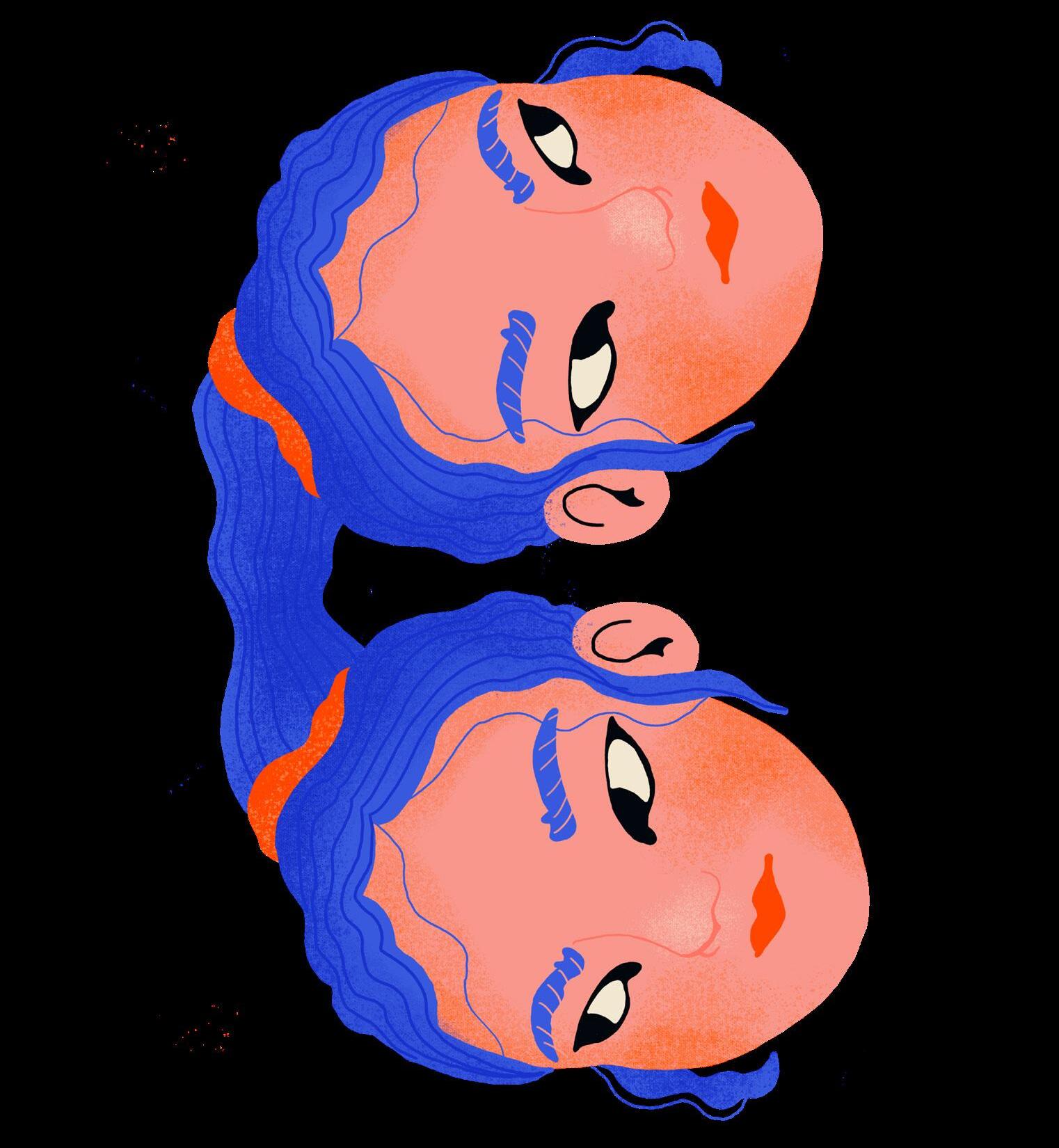
WHAT’S YOURS?
Words by Briana Pereira
Similar to love languages, one’s attachment style can heavily impact the way we build and interpret our relationships, platonic or romantic. The attachment theory is based on the work of psychiatrist John Bowlby and later expounded on by psychologist Mary Ainsworth and essentially states that our bond with our parents (or primary guardians) during childhood has a significant influence on our future social and intimate relationships.
The theory dates back to the 1950s and continues to evolve as more research is done on the subject, but at this point the attachment theory has four attachment styles within it, each having its own traits and characteristics. It reminds us that love is fluid and isn’t a one-size-fits-all thing. We might not resonate 100% with one of these attachment styles and that’s OK. Attachment is a spectrum and there may be elements from each category that we feel fit ourselves appropriately. Knowing all of the different attachment styles and their tendencies can help raise self-awareness and allows us to identify unhealthy behaviors and understand what we might need to work on in order to improve and maintain all of the beautiful relationships in our life.
ATTACHMENT STYLES
ANXIOUS ATTACHMENT STYLE
People who have an anxious attachment style usually suffer from high levels of insecurity and hold a negative view of themselves but a positive view of others. In many relationships they picture their partner as their “better half,” quite literally speaking. This is because someone who deals with an anxious attachment style often feels less worthy of love in relationships in comparison to the other party and has a fear of being without their partner and/or a fear of being alone in general. These people deeply fear abandonment and to ease this fear, they strongly desire security, attention, care and responsiveness within their relationships. An absence of these things in a relationship can lead someone with an anxious attachment style to be more clingy and demanding, feeling preoccupied with the relationship and desperate for a reminder and reassurance that they are still loved and wanted. Overall, people with anxious attachment styles value their relationships highly but are easily worried their loved one or the other party is not as invested in the relationship as they are.
People with avoidant attachment styles are often viewed as opposites of those with anxious ones. They tend to foster a high sense of emotional independence and self-sufficiency, holding positive views of themselves and negative ones of others. They do not feel like they are only complete through their relationship and do not want to have to depend on others and vice versa. For those who have an avoidant attachment style, they generally steer clear from intimacy, emotional closeness, and they don’t like showing vulnerability in relationships. They withdraw quickly from relationships if they feel that the other party is getting too quickly reliant on them and will suppress their feelings when having to face a potentially deep emotionally-dense conversation or situation.
AVOIDANT ATTACHMENT STYLE
10 Folio Weekly
Those who have a disorganized attachment style tend to pull traits from both the anxious and avoidant styles depending on circumstances. The other party and the relationship themselves are often the source of both desire and fear for the person who has a disorganized attachment style which can often lead to confusion or ambiguity in their relationships. On one hand, they do want intimacy and closeness, but on the other, they have trouble trusting and depending on others. People with this attachment style often struggle with identifying and regulating their emotions and tend to avoid strong emotional attachment due to their intense fear of getting hurt.
DISORGANIZED ATTACHMENT STYLE
SECURE ATTACHMENT STYLE
Unlike the other three attachment styles, a secure attachment style means the individual is comfortable expressing their emotions openly. This allows them to easily depend on their partner, while also letting their partner rely on them in return. Those with secure attachment styles tend to have positive views of both themselves and others, so they don’t seek external validation and can control their own emotions pretty well — and even help their partner with the same. They do well in relationships but also don’t fear independence.
There is lots of research surrounding the childhood factors that lead us to develop these attachment styles, but at the end of the day, they make us who we are, and no matter what attachment style we might identify with, we are still worthy of receiving love and capable of showing love. Similarly to love languages, it’s important for us to compliment our partners in the best ways we can or in better words “fill their cup.” Just like we would want someone to anticipate what we need or are feeling before we even have to say a word, so do they.

11



THE CURIOUS CASE OF FEBRUARY 29TH
Words by Jillian Lombardo
Ah, as we begin 2024, we are met with a leap day. Some cultures consider Feb. 29 to be unlucky. Others go as far as to say that the year itself is cursed. In Italy, they have a saying, “leap year, doom year,” or, “anno bisesto, anno funesto.” Even in places like Greece, they warn against weddings in a leap year. Unlucky or not, Feb. 29 is a day that surfaces every four years. So where did it come from?
The Roman Republic calendar followed the lunar cycle and lasted 355 days. This calendar system evolved countless times, but scientists generally understand its layout between 509 and 27 BCE. Following the moon’s phases greatly impacts why we have months today. Beginning with March, or Martius, followed by nine other months. The year lasted 304 days, leaving 61 days for the winter season. After going through another transition, the Roman calendar added Lanuaris and Februarius to account for the open gap in the winter. This addition is why the months named after numbers are no longer in sync. The scientific inconsistency of their calendar made it necessary to include a leap month every two or three years. They called these months Mercedonius or Intercalaris to keep the calendar in line with the proper seasons. The Roman calendar followed the month using calends, ides and nones. The calends were the first of the month in alignment with the New Moon. Then ides fell one day before the middle of the month, marking the Full Moon. Then the nones were the 7th day of 31-day months and the 5th of 29-day months in conjunction with the First Quarter Moon. They followed the solstice and equinoxes to keep their calendar in sync with the seasons.
This was followed until Julius Caesar became the new pontifex maximus. He immediately reformed the calendar, creating the Julian calendar in 45 BCE. In his calendar, he introduced a 365-day year divided into 12 months with every four years including an extra day known as leap day. At this time, February was the last month of the year, so leap day initially fell on Feb. 24.
Due to calculation errors, every third year until 12 CE was a leap year. The Christian church quickly realized their holidays were being pushed out of sync by the surge of leap days, while others complained about the displacement of their birthdays. The discrepancy lies in the mathematical error of believing a year was 365.25 days when, in reality, it is 365.2422 days. This caused an 11-minute error each year, and by the 1500s, it was causing equinoxes to be 10 days early. In 1582 AD, Pope Gregory created a new rule for the calendar to fix this mathematical mistake.
“Every year that is exactly divisible by four is a leap year, except for years that are exactly divisible by 100, but these centurial years are leap years if they are exactly divisible by 400. For example, the years 1700, 1800, and 1900 are not leap years, but the year 2000 is,” according to the United States Naval Observatory.
Thus, the Gregorian calendar was created. As of 2021, 168 countries use the Gregorian as their civil calendar with 26 countries using their own version. Because of this, some places are in a different year than most of the world. Ethiopia, for example, uses the Ethiopian calendar, a system closely linked to the Egyptian calendar, and lags behind the Gregorian calendar by six to eight years. The different calendars serve as a reminder that time, like culture, is multifaceted and ever-evolving.

So when Feb. 29 rolls around, don’t dismiss it as an anomaly. Embrace its unique presence, whether with a toast to leaplings, a mindful appreciation for the astronomical precision built into our calendars, or simply a smile at the fascinating tapestry of history, science and culture woven into this extra day.
13

Weird Wild Stuff

The Folio Weed column from last August related the funny-yet-terrifying story of some nice young folks who had an extreme reaction to weed gummies containing Delta 8, Delta 9 and THCB. One guy ate one gummy, and two others split a second, and they were all wrecked within a few hours. We mention that only to say, again, that three adults split two gummies between them, and the result was total chaos. Well, that is nothing compared to what happened to a couple in Charlotte, who bought a bag of what they thought were freezedried Skittles and took them to a party. They ate one or two, and they were fine — but their son (who is 6 years old) ate 40 of them, and he was not. We’ve always said that cannabis can’t kill you, but this practically proves it.
Everyone’s heard the old excuse, “My dog ate my homework.” Maybe you’ve even used it yourself. But imagine saying to the men who built the new fence around your home that you can’t pay them because your dog ate the money. That’s exactly what happened to a Pittsburgh couple in January. Now, the good news is that the dog didn’t just shred the bills, so almost all of the $4,000 was salvaged. But the bad news is that the act of salvaging required following the dog around and collecting “deposits” from the yard and literally laundering all that money. Speaking of which, if you think that sucks, imagine being the poor bastard in the late 1980s who had to tell the infamous Pablo Escobar (who at one point was spending thousands a week just on rubber bands) that rats had eaten a legit $1 billion in dirty money, stored in a warehouse. We’d love to ask him what that was like, but we can’t, because he was never seen again.
Most preachers are great people — this is what we’re told, anyway. Problem, though, is that the nature of the work means that when one of them screws up, it gets much more attention from the media than maybe it should,
and we’re gonna do that right now. As it stands, the most egregious hypocrisy we’ve seen in 2024 comes courtesy of a pastor in Denver, who created the INDXcoin for Christian cryptophiles.
He and his wife pushed it through the KWE, or “Kingdom Wealth Exchange”, and together they raised about $3.2 million between June 2022 and April 2023, almost all from friends and peers in the Denver area, all of whom are having a hard time forgiving them, because it was worthless. The pastor and his wife said that God had instructed them to create this, and then the flock got fleeced. It will be hard for any corrupt clergy to top this, but you know that someone will.
Let’s end this month’s installment by taking a bold step backward for the last story we’re ever gonna discuss from 2023, and we’re only mentioning it because: 1) it’s really sweet; and 2) it happened in Florida. More specifically, it occurred in Volusia County, where a woman found herself in about as bad a situation one can imagine: stuck in a car that had just gone off I-95, then hit a pole and rolled into a ditch with about three feet of water. She was safe, but her car was destroyed, and so was her day. Worst of all, that day was Christmas Day, and her three kids (all under 5) were stuck in the back, along with their still-unopened presents. As soon as police and firefighters successfully rescued the mom and kids, they set about saving the presents, which they did by forming a human chain and passing each present down the line. No word on what kind of presents the kids actually got, but they all walked away, and they did so carrying not only their gifts, but a story they’ll be telling people for the rest of their lives. ’Twas the season!
15

MORE THAN A GAME

In the world of sports, the impact extends far beyond the thrill of victory and the agony of defeat. Major sporting events often benefit the places they occur in by generating massive amounts of revenue, bringing in more tourism, and ultimately help the city build their own unique culture. Jacksonville is one of the country’s fastest growing cities, and a huge part of that is because of their success through organizations like the Jaguars and the Jumbo Shrimp. For cities fortunate enough to play host to major sporting events, the spectacle goes far beyond the thrill of competition — it’s a golden opportunity to score big in terms of revenue generation, economic stimulus, and brand elevation.
Sporting events inject millions, and sometimes billions, of dollars into local economies. From hotel bookings and restaurant reservations to merchandise sales and ticket revenue, the economic impact of hosting a major sporting event is substantial. Local bars and restaurants more than double their average amounts of revenue due to the increased traffic flow of fans rushing in before, during or after the games. From building or upgrading stadiums and arenas to expanding transportation networks and accommodations, cities embark on ambitious projects aimed at enhancing the overall fan experience and accommodating the influx of visitors. The upcoming and highly anticipated renovation to Everbank Stadium is one of the ways Jacksonville plays into this strategy. This completely reimagined stadium is estimated to cost over a billion dollars from the city, but in the long run, Jacksonville will get more than that amount back due to the excitement and new opportunities that will follow in the coming years. Hopefully after it is all said and done, Jacksonville could have a spot in line to host a Super Bowl in the next decade, which is one of the biggest revenue generating events in the sports industry.
It is not only the big-name events or organizations that play a role in this though. Teams like the Jumbo Shrimp and the Icemen also help from the inside, gathering local fans and creating strong fan bases that keep people involved and want to come back for more. The Jumbo Shrimp’s “Thirsty Thursday” deals generate lots of money and ticket sales every week during the season, as the beer is so cheap that it is hard to resist not joining for a few innings. Jacksonville’s newest pro basketball team, “The 95ers,” are also generating excitement as they look to become the city’s best new entertainment.
Sports tourism has emerged as a significant driver of economic growth for cities worldwide. Whether it’s the roar of engines at the Formula 1 Grand Prix in Monaco, the thunderous applause at Wimbledon or the electric atmosphere of the Super Bowl, sporting events captivate audiences and draw visitors from every corner of the globe. Sporting events serve as powerful magnets for tourists, drawing visitors who come not only to watch the games but also to explore the host city’s attractions, culture and cuisine. The increase in tourism creates a ripple effect, stimulating growth in the hospitality, entertainment and retail sectors.
Aside from the immediate benefits that the city receives, sports organizations also help out in their own communities and show their support for the area they represent on a more personal level. Just last summer, the Jaguars helped put together a new state-of-the-art sports complex for the Boys & Girls Clubs of Northeast Florida. Giving support like this is one of many ways that they have contributed to the city in a positive manner, and they’re always striving to improve the place they also call their home.
The popularity and success of sports organizations helps the area build character and establishes a different type of culture that is hard to find in any other industry, and Jacksonville is a perfect example of this. The busy streets of downtown Jacksonville ooze teal and gold, the atmosphere is filled with nothing but love for the home team with fans everywhere roaring the word “Duval” as a signal of pride that could make anyone into a Jags fan. This exact setting may be unique to North Florida, but things like this happen all around the world, and it all stems from the beautiful culture that sporting events allow us to share.
From the glitz and glamour of the Super Bowl to the global spectacle of the Olympic Games, major sporting events represent a golden opportunity for cities to showcase their strengths, stimulate economic growth, and leave a lasting legacy for future generations. By leveraging the excitement and energy of game day, cities around the world are scoring big in the game of economic development, proving that when it comes to hosting major sporting events, everyone comes out a winner.
17
HOW DO YOU BENEFIT FROM MY CULTURE & I FACE THE REPERCUSSIONS?
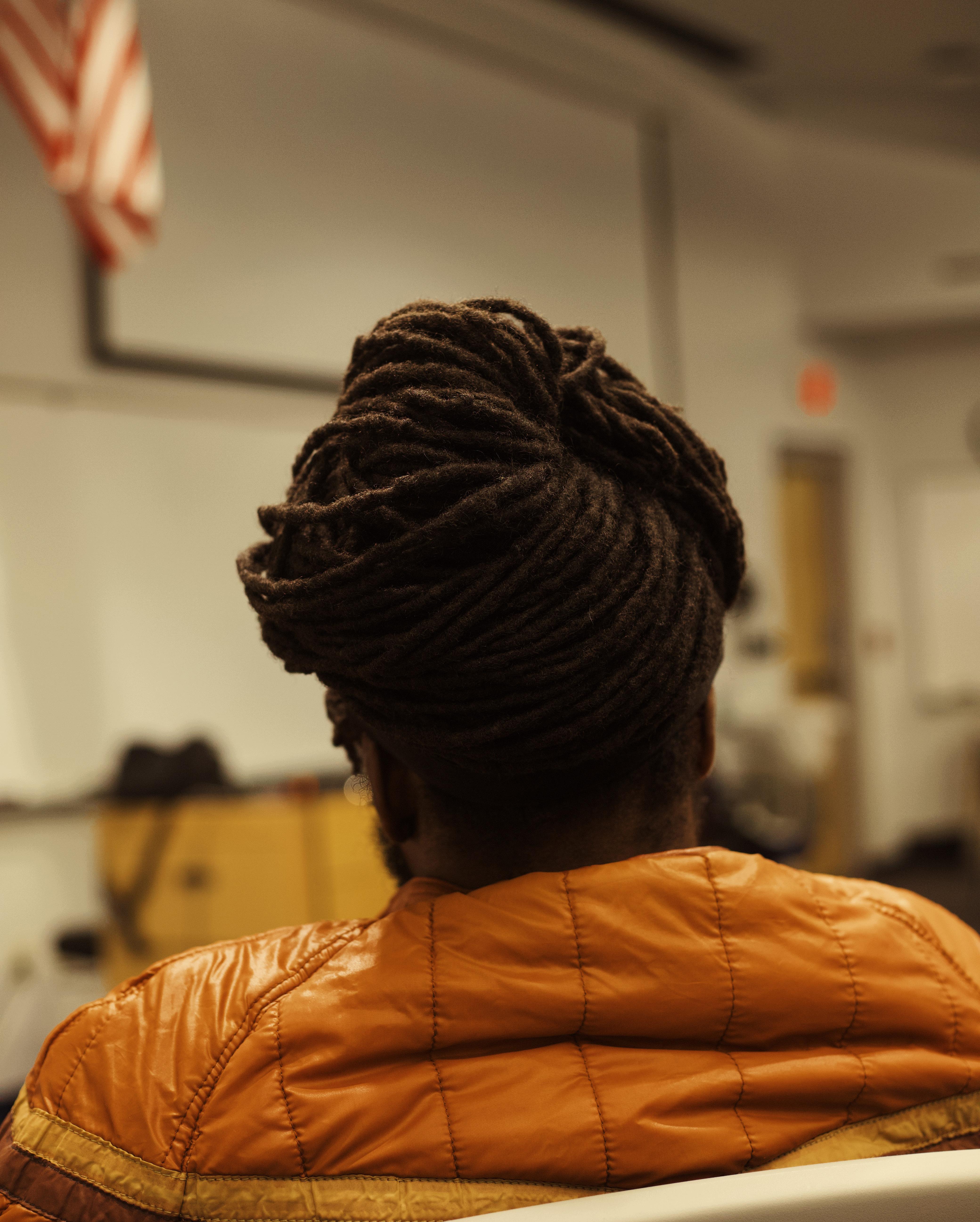
Words
& photos by Amiyah Golden
Imagine this…
You’re looking at yourself in the mirror — grinning from ear to ear — admiring the hours and hours you just spent sitting in a salon chair with multiple hands tugging, pulling and gripping at your scalp. You move your neck around, letting the tensed muscles finally decompress. You let out a sigh of relief, knowing the discomfort you just experienced was worthwhile.
Box braids was your style of choice this time around, a protective hairstyle used to shield your natural hair against the varying elements, halt your weekly wash days for a few weeks, and connect you back to the culture you come from. You wear this style proud, feeling beautiful, an affinity to your community and less anxious about the time spent finding hairstyles for your 4C hair.
You arrive at work the next day, ecstatic to show all your co-workers your new ‘do but instead you’re escorted to HR. You sit down — the joy from the day before now gone — and you’re instructed to remove the hair that you just sacrificed time and money for — or face possible termination. –
Destiny Tompkins, New York
Imagine this…
You’re preparing for one of the best days of your life — graduation. You wake up extra early, you lay out your clothes, and you watch the clock wind down. You remove the scarf you used to lay down your fresh retwist. You shudder at a flashback of the pain of the hairstylist separating your locs, but you snap back to the present, realizing that the intricate separation of your coils was all going to be worth it when you get to walk across the stage.
You arrive at graduation with the support of your family in the crowd. You mingle with your fellow classmates – only to be notified that you in fact would not be walking the stage today due to the length of your locs.
DeAndre Arnold, Texas
Imagine This…
The alarm buzzes, notifying you that it’s time to go to work. You wake up, and begin your morning routine: wash your face, brush your teeth, do you makeup and hair. You decide to brush your hair back into a neat bun for the day, using your Eco styler gel and a hard bristle brush to prevent any flyaways. You grab your silk scarf and wrap it tightly, keeping it on your head until you’re ready to go (further securing any possible frizz.) You arrive at work way ahead of time (per usual) and prepare yourself for the day. You do your work efficiently and proactively, but you’re distracted by the whispers and stares coming from your co-workers and manager.
You wonder what all the murmur is about only to be informed that your natural hair was deemed unprofessional. You begin to realize this is your first time wearing your natural hair to the office since you got this job. You often stuck to wigs — for convenience’s sake — and the jet black, 20 inches of length that often swung behind your back (that was always met with sparkly eyes and compliments) wasn’t being adorned today. Those routine smiles turned into puzzled glares, and you catch word that your manager has compared your latest appearance to one of negligence, even though you always put much effort and pride into your daily appearance. The only difference was that you had chosen to grace the hair that grew out of your head today — just like everyone else in the office. The only difference was that you were Black.
Imani Jackson, Louisiana
I don’t use the phrase “imagine this” to immerse you as a reader into a place of hypotheticals, but for you to empathize with the ongoing reality that is … being Black in America. Aside from a plethora of issues that simply exist because of the color of my skin, it continues to funnel its way into our own self-expression, as a people.
We all have the privilege of customizing our bodies like real-life Sims characters. If you want to change your style, you can. If you want to change your physique, you can. If you want to change your hair, you also have that right — and while this is such a cool feature of being a human with autonomy (and also a privilege in many instances), it is one that is conditional upon a “type” of person.
We see this in the testimonies of Destiny Tompkins, a 19-year-old who was threatened with disciplinary action at her job at Banana Republic if she did not remove her box braids, which her manager deemed as “urban” and “unkempt.” And DeAndre Arnold who was met with an ultimatum by his school district to cut his locs or not attend one of the most monumental days of his life, graduation, because his hair length did not fit the school’s dress code. And Imani Jackson, a sales representative who was told by the owner of the company that her natural hair was “unacceptable,” “was sticking every which way” and that she “looks like she just rolls out of bed.” She was told she needed to wear her wig every day.
These aren’t stories that exist in rare circumstances but happen more often than you think.
As a Black woman, I can’t express how many times I’ve had to manipulate my 4C hair just to fit into a Eurocentric standard of acceptability.
The notion of my Black hair not being seen as “presentable” or “worthy” has subsisted since the days of dance recitals and cheer competitions as a young girl. You would think getting sew-ins or wigs would solve the luring pressure of assimilation, but it only continued to strengthen the ignorance of my white and white-adjacent counterparts. Those hairstyles also had parameters to them — no “loud” colors, no blonde, not super long, etc. When I was done damaging my hair to fit into these unattainable standards that I would never reach, I turned to cultural coiffures such as, box braids, cornrows, Locs, Bantu knots and other styles that would not only make me feel confident and connected to my Black lineage and culture but would safeguard my crown against temperamental Florida weather, aid in hair growth, and save me from stresses and anxieties that accompany my coils and curls.
I’m not ashamed of my natural hair nor am I ashamed of the Kanekalon that I choose to weave into my own. It connects me to a history that has been stripped away from so many who hail from the African diaspora in America.
The culture of Black America is so rich, perseverant and precious. It cannot be appreciated without talking about the systematic effects that come with simply partaking in the culture: loss of jobs, discrimination, bias, missed opportunities, etc.
We know America as this huge melting pot of people, languages, religions, ideas and, ultimately, cultures. And while it’s a beautiful thing to get to share assorted customs and traditions with others, we have yet to break down the structured barriers that hold some cultures captive to judgment.
19
To share culture is to enlighten, admire and appreciate from the perspective of a different lens.
Although, there is a fine line between appreciation and appropriation.
The topic of cultural appropriation has been the center of some hot-button discourse in the last several years, and rightfully so, I think.
While fragments of Black culture seem to be becoming more digestible and appealing, the caveat is that it only applies when white skin becomes the poster child.
Box braids, long nails, big lips, messy buns, baggy clothes are all fine… when they’re not worn by a Black person, that is.
This is not a sentiment I’m willing to argue, as I have seen it countless times with my own eyes.
And I’m not one to mention the race card at every given inconvenience or when it’s not needed. But when people’s livelihoods are affected simply on the merit of genealogy, individualized expressiveness and customs it becomes a worrisome reality that regardless of one’s aptitude, it will never be good enough due to systematic prejudice.
While everyone has a different take on what is considered “appropriation,” I think it’s important to note that the voices who are a part of said culture hold the most authority.
While I as a Black woman think that those who aren’t Black shouldn’t parade around in culturally Black hairstyles, another Black individual could totally disagree and regard the belief as “not that deep” or “it’s just hair” and I come to challenge that notion.
“It’s Just Hair”
This statement simply isn’t true.
Black hair unfortunately comes with a long history and that history includes a ton of sacrifice.
It comes from a past of determination from white slave owners to strip Black people of their tribal culture and lineage. Black hair comes as the derivative to classify tribes based on status, wealth and ranking. Black hair comes with loaded shame that has taken us, as a people, generations to unlearn the hateful characteristics attributed to our hair — unattractive, dirty, unprofessional, gross and worse.
I could go on and on and there’s truly not enough room for me to inform you through this one article but I highly encourage you to read up on the history behind the past and present view of Black hair.
Black hair has never just been a means of expression for us, and I wish it could exist in that way.
The Kardashians will never face the racial backlash from simply adorning cornrows. They will profit and get praise, even being credited as the masterminds behind this “new” hair trend.
When cornrows were used as a form of communication amongst former slaves.
“IT’S JUST HAIR” THIS STATEMENT SIMPLY ISN’T TRUE.
The popularity of having big lips and a curvy figure is also now ascribed to the Kardashian dynasty as being the ones to initiate these features as aspirational and the norm but, I recall vivid moments of torment come into view for me as I remember being ridiculed for the same Black features I was born with.
The inequity as a result of appropriation really comes into perspective when white or non-Black celebrities or influencers simply garnish wealth and accolades on behalf of a culture, they never were a part of nor had to face the mockery, termination, prejudice or even violence linked to being Black.
I could focus on a multitude of aspects of Black culture that have been appropriated but for the sake of the of this article, I urge you to take time to educate yourself on the injustices that occur as a consequence of ongoing systematic oppression, ignorance and chronic intolerance when it comes to Black people - woman, men, and children alike.
If you’re not Black and you’re thinking about rocking culturally traditional styles for fun or to be considered “edgy”, or to simply cosplay as a Black person – I hope you can accept the fact that you will still remain untouched by racial discrimination and your Black peer will never fully benefit from embracing the traditions instilled in them through bloodline and tenacity. Your contemporary has to weigh their options of getting a style that will protect their hair or face possible bigotry.
With some progress being made such as the legislation of the CROWN Act. It points to a future of acceptance but, we as a society still have such a long way to go to continue to make strides to live in an equitable society. No one, regardless of race, sex, or gender should ever have to fear unemployment or punishment for simply existing in the skin and culture they were assigned and embrace.
20 Folio Weekly








april 4th – april 14th, 2024 CLAYCOUNTYFAIR.ORG 0 4 .0 4 .202 4 TICKETS ON SALE NOW! PRICES GOOD THRU APRIL 3RD. MUST PURCHASE TICKETS IN ADVANCE FOR DISCOUNT! FOR VISITOR INFORMATION, VISIT: WWW.EXPLORECLAY.COM $ 10 ADULT FAIR GATE TICKETS PRE-SALE PRICE $ 20 RIDE ARMBANDS NOT VALID SATURDAY $ 6 SENIOR & KIDS FAIR GATE TICKETS PRE-SALE PRICE Scan Here for Information & Promotions: OUR FAIR CARES DAY presented by First Coast News $5 Admission April 9th 2pm-7pm BUY YOUR DONATIONS FROM YOUR LOCAL WINN-DIXIE STORE, KEEP THE RECEIPT AND RECEIVE $7 ADMISSION ON MONDAY, APRIL 8, 2024. BENEFITTING Clay County Animal Services: new or used towels, blankets (no stuffing), treats, cat dry food, etc. Clay County Education Foundation: crayons, colored pencils, markers, pencils, and cleaning wipes Orange Park Clothes Closet + Food Pantry: Peanut Butter & Jelly, Pasta, Mac-N-Cheese, Rice, Cereal & breakfast foods, Spaghetti Sauce, Soups, Canned vegetables and meats
Hoops and Dreams: Jacksonville – A Football Town or Basketball Town?
The 95ers want you to start thinking about basketball again in Jacksonville
Words by Folio Staff
Basketball has been the sport of hoops and dreams since its origins and those dreams are returning to Jacksonville. The sport has evolved immensely since educator James Naismith invented it back in 1891 to keep his students active during the winter. Back then, there was no net — a person had to retrieve the ball from a peach basket each time a successful shot was made.

The Basketball Association of America (BAA) was the most dominant of the few professional basketball leagues in North America. The BAA was only two years old when it absorbed most of the National Basketball League (NBL) in 1949 and rebranded as the National Basketball Association (NBA). The NBA did not become a monopoly overnight, though. The rival American Basketball Association (ABA) was its main competitor from 1967 to 1976. Then the ABA and NBA merged into what we now fully understand as the NBA.
It’s hard to imagine that basketball, as we know it, is still younger than some of the legends who played it: Jerry West, the inspiration for the NBA logo, is 85 years old; Kareem Abdul-Jabbar is 76 years old; Dr. J (aka Julius Erving) is 73 years old; and Jacksonville’s own Hall of Famer Artis Gilmore is 74 years old.
The origins of basketball in Jacksonville are rather legendary and the latest attempt is being shot by the Jacksonville 95ers next month.
Jacksonville WHO? The Story Behind the
Jacksonville University Dolphins
Duval’s basketball narrative began with the inception of Jacksonville University’s (JU) men’s basketball team in 1948. However, it would take several decades for JU to ascend to Division I status, marking a significant turning point in its college basketball journey and elevating its relevance in the sport.
The documentary “Jacksonville Who?” shares the story of JU’s integrated basketball team overcoming racial tensions and becoming the smallest school in history to reach NCAA- Division I. In the documentary, the narrator begins, “I don’t know if a Hollywood script writer could have done a better job watching the ascension of Artis from Jacksonville.” If you haven’t seen this 52 minute documentary, stop and watch it.

City leaders discuss the civil rights turmoil of the era, including Ax Handle Saturday, which occurred in 1960. Despite all that was going on around the city, the JU basketball team was a microcosm of how black and white individuals could not only work together but love each other. No other sports team — college or professional — was representing the city of Jacksonville at a national level and they did so in a transcendent way.
From 1967 to 1969, 7-foot-2-inch Artis Gilmore was enrolled and played basketball at Gardner-Webb Jr. College (now University) in Boiling Springs, North Carolina. Gilmore led Gardner-Webb to the NJCAA tournament in 1968 and 1969 and was a two-time junior college All-American where he played alongside Ernie Fleming. When JU recruited Fleming to come to Jacksonville, Fleming wrote back and said he’d love to come to Jacksonville … and would like to bring his roommate, Artis Gilmore, with him.
22 Folio Weekly

“Jacksonville WHO?” shares the story of how Gilmore refused to travel to Jacksonville by bus or plane because he was worried about Gardner-Webb (and those who would find the departure unsettling) finding out.
“Maybe it was paranoid, maybe it was true, maybe it was not,” Gilmore said in the film. “But we decided we were not going to catch an airplane, not going to catch a bus because we just assumed there would be personnel in those locations observing our departures.”
Segregation and racial violence were systemically infused in the South. At that time, there was only one Black player in all of the Southeastern Conference. JU started three Black players.
“There was a different mentality in Jacksonville,” Artis continued. “There was a sense of tension in the community. Except within our group of individuals.”
As the popularity of the games grew, venues in the Jacksonville area were chosen to accommodate the large crowds. However, due to segregation, organizers had to carefully scout locations where the events could be held.
“I think that the players did a lot for, not just JU, but for the city,” Fleming’s widow, Marchita Simmons said. “To see Black men becoming famous in the city. You got to remember the integration of schools here was in 1968.”
Gilmore ultimately led the Jacksonville Dolphins team to a 27–2 record and into the 1970 NCAA tournament. The NCAA tournament was an even larger challenge, as they had a series of top teams back-to-back. As JU arrived
for a second-round matchup in Kentucky, the hotel sign said, “Jacksonville, who?” Kentucky refused to have Black athletes on their team and made that a point of pride and contention. They were also one of the best teams in the nation coached by a future hall-of-fame coach. The JU Dolphins won 106-100 despite the longest of odds.
In the championship game, JU faced off against John Wooden’s UCLA Bruins. JU had the early lead, but UCLA made adjustments. Some say the referees had whistles that were partial, but UCLA was able to block Gilmore and had a speedy fast break. Duval’s best lost 80-69.
However, it was a show of unity and solidarity on a national stage. Thousands of fans met the team at the airport. The police escort drove them past people of all races and ages showing love, support and unity.
Current JU President Tim Cost recapped the season from a broader perspective, “If you talk to people to that era, it jumpstarted the healing of race relations in this city and this part of the region. People came together over the game and love of these young men.”
Jacksonville Basketball History
Other leagues don’t quite have the status of the NBA but play meaningful basketball at a professional level. One such league is The Basketball League (TBL). The TBL just completed its sixth season and recently expanded from 44 teams in the 2022 season to over 50 in 2023 and Jacksonville is one of those lucky cities.
Jacksonville has been the home city to several other basketball teams over the decades. In 1970, the ABA’s Miami Floridians decided to become a regional team and dropped “Miami” from their name. The Floridians played several home games at the Jacksonville Coliseum during the 1970-71 season. Jacksonville proved too small of a market, and Duval was taken off of the rotation. The team completely folded in 1972.
In 1986, the Jacksonville Jets were the first formal semi-professional basketball team in the city, playing in the Continental Basketball Association (CBA). The CBA was used as a training ground for future NBA athletes like the TBL or the NBA’s D or G leagues.
Then-president of the Jets, Ted J. Stepien, promised, “In the months to come you are going to witness basketball like you’ve never seen before…The Jacksonville Jets are made up of top NBA picks and former college All-Americans.”
Stepien was the former owner of the NBA’s Cleveland Cavaliers. However, he was controversial during this time for his views on segregation. In an interview in December 1980, Stepien said, “No team should be all white and no team should be all Black, either. That’s what bothers me about the NBA. You’ve got a situation here where Blacks represent little more than 5 percent of the market, yet most teams are at least 75 percent black. The New York Knicks are 100 percent black. Teams with that kind of makeup can’t possibly draw from a suitable cross-section of fans.”
Stepien concurrently described himself as “big on desegregation” and “for a totally integrated society” but seemed focused on the lack of what he felt was an underrepresentation of white players in the NBA. The team received a lot of hype and put out top-of-the-line marketing in its day and eventually moved to Mississippi on Jan. 2, 1987.
23


The United States Basketball League (USBL) was formed in 1985 and the Jacksonville Hooters joined the league in 1988. That year, they had a record of 21 wins and 9 losses, finishing first in the USBL but losing in the semifinals. The Hooters are officially accredited with winning the USBL championship in 1990, as they went 15-1. In 1993, the team briefly moved to Daytona Beach before returning to Jacksonville. They shortly adopted the name “Shooters” before ultimately settling on “Barracudas.” During their time as the Jacksonville Barracudas, the team gained recognition in Sports Illustrated for one of their standout players, renowned boxer Roy Jones Jr.
In 1999, Joe Newman and the Richard P. Tinkham re-launched the ABA “in partnership with the NBA,” according to its website. The new ABA looked at Jacksonville and discussions occurred about a Northeast Florida launch under the name “Jacksonville Jackals,” but the team never developed.
In the early 2000s, high-level basketball was on the city’s priority list. The city assisted with some funding toward exploring the viability of basketball in Jacksonville and the Orlando Magic even held training camps at UNF. The U.S. men’s basketball team came to town for an Olympic warm-up friendly at the Veterans Memorial Arena in 2004. The arena also played host to the opening round of the NCAA men’s basketball tournament in 2006.
The ABA finally made its debut in Jacksonville in 2006 with the addition of the Jacksonville Jam as an expansion team. The Jam had an impressive first season, finishing with a 25–8 record and earning the No. 2 seed in the ABA tournament. Owner Felix Krupczynski received recognition as the league’s Executive of the Year, as noted in the Jacksonville Business Journal on April 20, 2007.
24 Folio Weekly
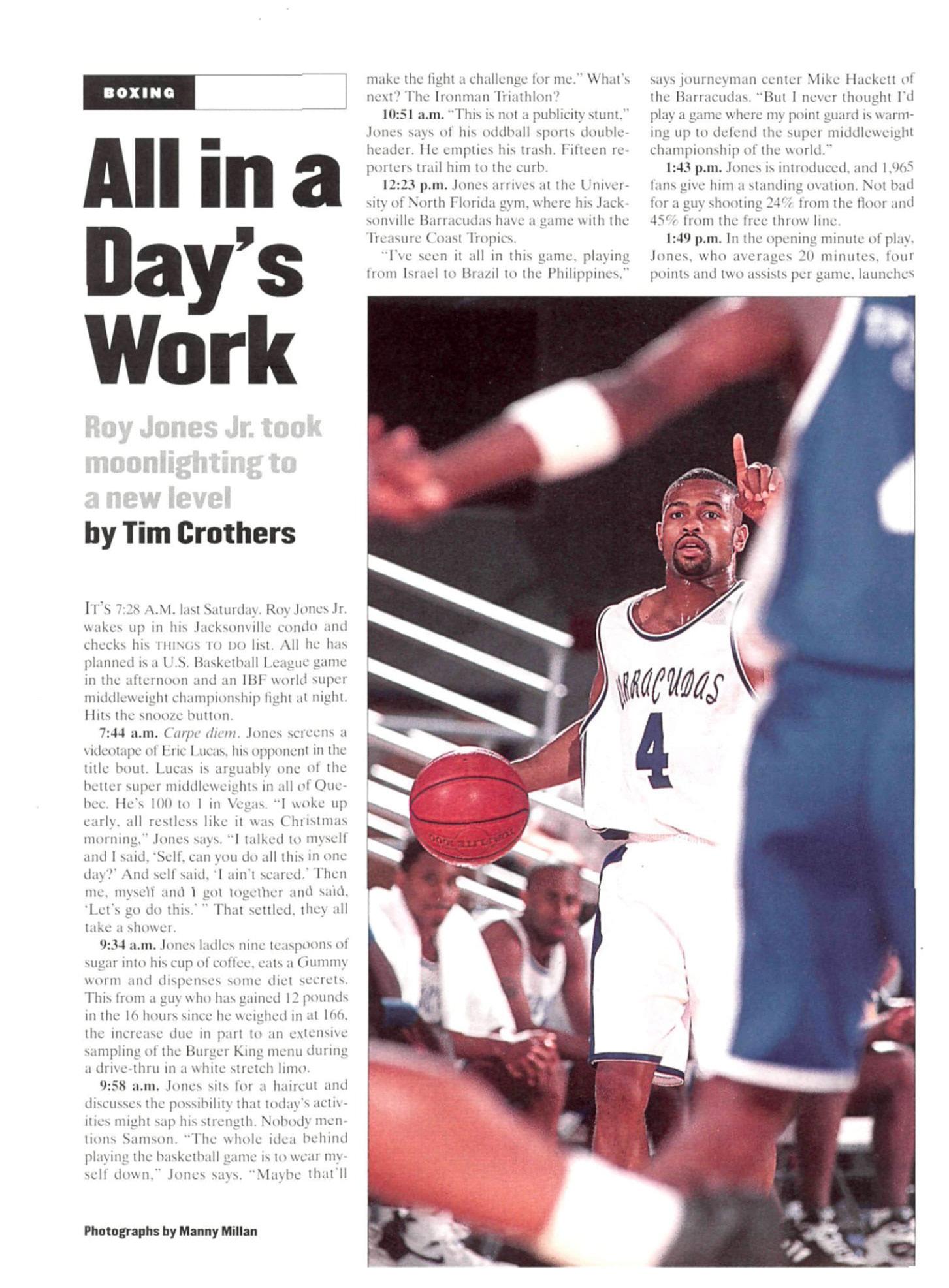
Initially, the team played at the arena, but high overhead costs led to financial difficulties. They subsequently moved to the more affordable court at UNF. However, after the season, players claimed they were not paid as promised, resulting in tension between Krupczynski and ABA leadership. Seeking a solution, Krupczynski turned to the Professional Basketball League (PBL). Unfortunately, on February 4, 2008, the PBL announced the termination of the Jacksonville Jam organization due to failure to meet obligations. Although the league planned to rebrand the team as the Jacksonville Slam, it ultimately folded.
The next team was the Jacksonville Bluewaves, which originated in the World Basketball Association, a small league with six teams in Florida and Georgia. They played their home games at Edward Waters College and went 6-0 in their inaugural season. Once again, it was not without challenges. During the season, the team was forced to cancel a game and would later move games to Bolles High School. Dwane Joshua was one of owner Kevin Waters’ important players. Both now join the city’s latest semi-pro basketball team, the Jacksonville 95ers, as owners and leaders.
On July 9, 2010, it was announced that the Bluewaves would be joining the new American Basketball Association. Joe Newman served as the CEO of the ABA at the time and announced, “Jacksonville is a great city and deserving of a quality ABA organization. In Kevin Waters, we’ve found the right owner to maximize the potential. I’ve known Kevin for several years and am very impressed with his abilities both on and off the court.”

Given the lag between seasons, Waters accepted an offer he couldn’t refuse, partnering with well-funded personal injury attorney Ron Sholes to start the Jacksonville Giants.
Sholes secured the territory rights for Jacksonville in 2010 for the American Basketball Association.
In a 2016 “Jacksonville Daily Record” article, Sholes noted he constantly talks to front office staff and the coaches about players, the team, how they’re playing and other aspects you’d hear from an engaged owner. The Giants were successful on the court as ABA National Champions in 2012, 2013, 2016, 2017, 2018, 2019 and 2021. In 2016, the Giants were allegedly recognized by the ABA as, the “Highest Regular Season Attendance in ABA History –8,987.” However, attendance went up and down. They, too, left the arena and suffered from largely only being sustained by legal and medical marketing combined with COVID-19. As attendance fell, the Giants folded with no announcement after being eliminated from the 2021–2022 playoffs. Its website is still active.
Jacksonville Legend: Artis Gilmore
Artis Gilmore is and remains the cornerstone of basketball in Jacksonville. When he entered the professional ranks, Gilmore created a bidding war between the rival NBA and ABA. He was drafted by the Kentucky Colonels in the 1971 ABA draft and by the Chicago Bulls in the 1971 NBA draft. The ABA’s
25
Kentucky Colonels won out and signed him to a 10-year, $2.5 million contract. He’d play in 420 consecutive games and was a quiet star of the league. The ABA was then consumed by the NBA after the 1975-76 season and Gilmore was the No. 1 pick by the Chicago Bulls. After the 1981-82 season, he asked to be traded and played for the San Antonio Spurs.
He’d round out a brilliant career in the NBA with the Boston Celtics.
In 909 regular season games, Gilmore ended his time in the NBA, finishing with 15,579 points (17.1 PPG), 9,161 rebounds (10.1 RPG) and 1,747 blocked shots. His final stats in the ABA included 9,362 points (22.3 PPG), 7,169 rebounds (17.1 RPG) and a league-record 750 blocks.
Gilmore was an 11-time All-Star, the ABA Rookie of the Year, and an ABA Most Valuable Player (MVP). Julius Irving (aka Dr. J) personally introduced and welcomed Artis Gilmore into the NBA Hall of Fame in 2011.
The Next JacksonvilleChapter:95ers
Jacksonville’s newest basketball franchise is the Jacksonville 95ers, and they are set to begin play in the TBL next month at Jacksonville University. This league is considered to be one of the highest minor professional basketball leagues, with talent akin to the NBA’s G-league.
The Jacksonville 95ers is the brainchild of former player, coach and general manager Kevin Waters.
“I mean, I fell in love with basketball when I was 2 years old,” Waters explained. “My family used to laugh at me. I was dribbling the basketball without really knowing how to walk”
Waters started coaching basketball at the college level, starting off at Edward Waters University (then College) as an assistant coach for two years before moving on to Kennesaw State University in Atlanta where the team won the Division II National Championship. Upon moving back to Jacksonville, Waters fondly recalled getting a call from ABA commissioner Joe Newman. They complimented him and looked for him to help steer the Jacksonville Giants. Waters first served as head coach of the Giants until 2016, which led him to be the ABA’s head coach of the year twice. From there, Waters went to coach at Wilberforce University in Ohio and then to Fort Lauderdale where he won the FIBA National Tournament in 2022.
Under Waters’ leadership, the 95ers have big plans. Waters and his fellow owners want to give fans a gameday experience that is fun and rewarding while also giving back to the community. The ownership group aims to bring top-quality basketball to Jacksonville while also providing fans with the NBA experience on game days.
According to Waters, the 95ers organization plans to stand out by the end of its inaugural season.
“For example, our gameday experience, I know there are some other teams who have a great game day experience, but we are looking to put on top-level entertainment in reference to, the top performing dancers, artists that come through and having a lot of activities for the kids to participate in and something that will be a that will be engaging throughout the course of the game,” Waters shared. “The other thing that’s going to separate us from the other teams is being a winner. We understand the importance of being a winner here in Jacksonville. So it’s our duty to put a championship-level team on the court.”
Waters chose the name, the 95ers because of Interstate 95’s central role in and around the city.

26 Folio Weekly

“We want to be a staple in the community. That’s the main goal first. And we want to provide quality entertainment,” Waters said. “We want to bring championships here to the city.”
“I had this dream two years ago about bringing a professional team here to Jacksonville. So I was thinking what would be a good name. And so many use animal names or things which don’t represent the city,” Waters explained. “You have to go through I-95 to get to Jacksonville and it runs from Maine to the southern tip of Florida and is a significant transportation hub for the country. Hmmm, Jacksonville 95ers. The name just kept coming back to me. But it was something that God had put into my head, a couple of years ago.”
And that’s not the only Jacksonville tie-in. The team mascot will be Johnnie, the River Monster. As covered in ‘Folio’ and on The Jaxson website, the first account of Jacksonville and the St. John’s River’s version of Nessie, the Loch Ness monster dates back to 1849.
As noted on The Jaxson, “From a newspaper called ‘The Examiner,’ the ‘Daily Journal’ quotes the story of [a man named] Adams when, at the mouth of the St. Johns River on the 18th of February, 1849, his own and the attention of the crew was riveted upon an immense sea monster which he took to be a serpent.”
In October 1953, “The Orlando Sentinel” reported about a reward for capturing “that old St. Johns River monster.” Indeed, by land and by river, the 95ers have brought Johnnie to life to entertain and give back to the community.
The 95ers’ season will run from March to May with playoffs in June. So be sure to come on out to support our new team the 95ers, and see what excitement awaits. Get your tickets at www.jacksonville95ers.com

CELEBRATING BLACK-OWNED
LOCAL BUSINESSES IN JAX
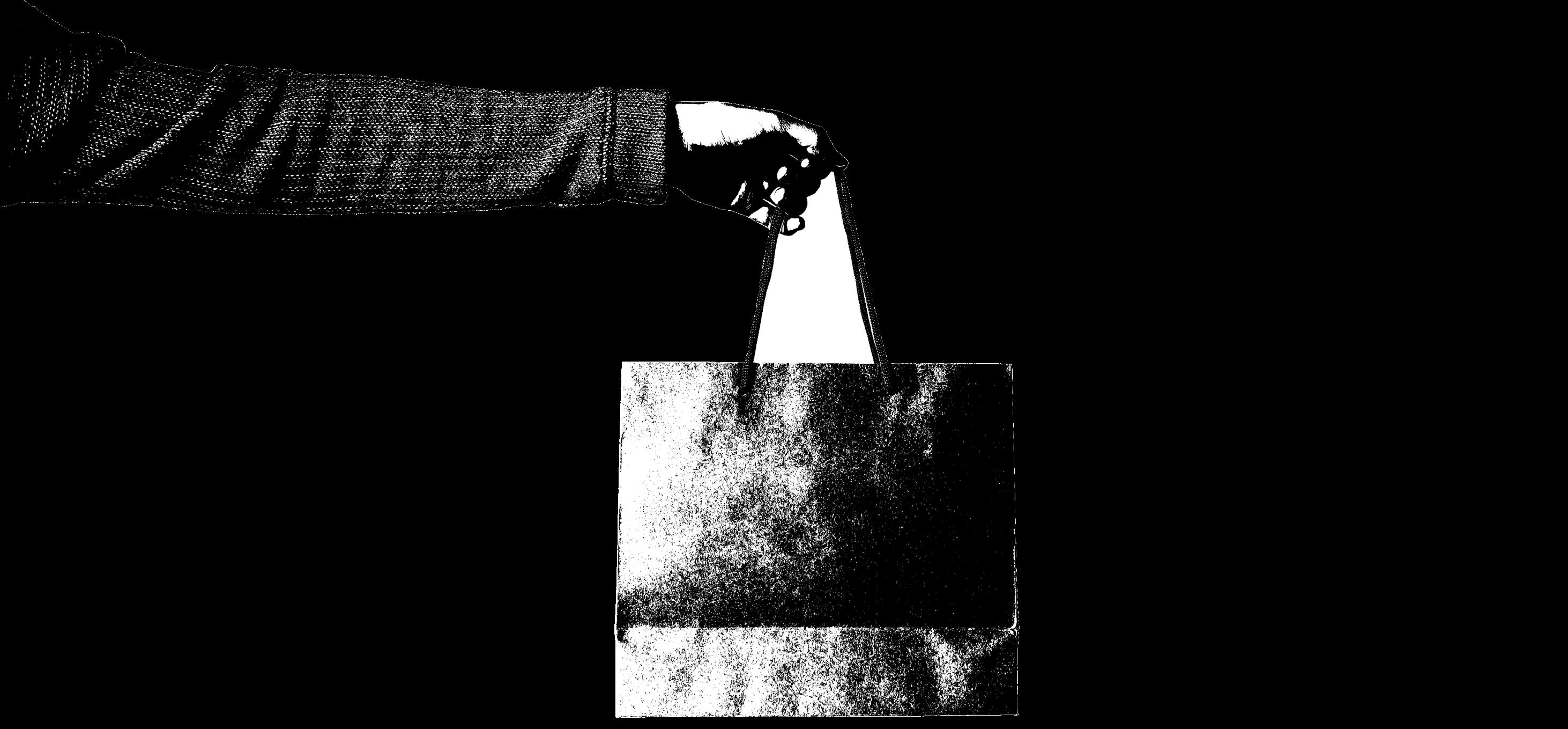
Two Sisters and A Deviled Crab: Who are the Two Sisters?
Jo Johnson and Kiara Simons are sisters who grew up in Tampa, and like most Tampa natives, grew up eating deviled crabs. For those who might not be familiar, deviled crab is similar to a crab-based croquette. It’s a Cuban-influenced dish, typically made with seasoned crab meat that is mixed with various ingredients such as bread crumbs, spices, herbs and sometimes vegetables. The mixture is often stuffed either back into the crab shell or formed into patties, then baked or fried. It’s a flavorful dish with a bit of a kick, well known to the Tampa area and its people.
Johonson took the lead and moved to Jacksonville around 10 years ago, and Simons followed after graduating high school. When the COVID-19 pandemic was at its peak in 2020, the sisters began talks about starting a small business. At first they toyed with the idea of running Airbnb properties down in Orlando but soon realized weekly drives were not going to be doable. Around the same time, circumstances led them to make some trips back home to Tampa to visit their great aunt and mom, but the sisters always made sure to treat themselves with deviled crabs on every visit.
In February 2021 on a Sunday drive back to the 904 from Tampa, the two sisters realized the community of Jacksonville was missing out on the powerful and delicious flavors of deviled crabs. For months, Johnson and Simons, neither of whom had any prior culinary experience, worked to perfect their own deviled crab recipe; one that would make both their family and their hometown proud. A year later they held the grand opening of their food truck, Two Sisters and a Deviled Crab, in Orange Park where their business took off expeditiously.
After much success with their initial opening as a food truck Johnson and Simons decided to expand their business and open another spot. In July 2023 they opened their second location inside the Orange Park Mall (they still use the food truck but mostly for special events and festivals).
I had the opportunity to sit down with the sisters at their restaurant, and when I tell you I felt like I had entered, for me at least, every girl’s idea of what Barbie-land would look like, the minute I walked past the rope, I just
couldn’t help but smile the whole time I was in there. Not only was the colorful pink interior of the business enough to add some joy to your day but the presence and personalities of Johnson and Simons made me feel so welcome and comfortable, I felt right at home. Before sitting down I had an opportunity to take a peek at their menu and hear some of their LTOs, and even though my dietary needs unfortunately prevent me from enjoying a good number of the things on their menu they were so accommodating for me! They made the most delicious Cuban in a lettuce wrap, YUM! So yes, in addition to their delicious and signature deviled crabs, their menu offers other beloved dishes, some seafood based, others not, to ensure that every customer has a rich culinary experience. The menu has been uniquely crafted to stimulate even the most seasoned palates, and as Johnson and Simons like to say, “We’re here for the bougie taste bud.”
With such a unique menu, you know I had to get the chef recs (excluding the deviled crab, obviously). Johnson’s top menu choice is their Whole Snapper Special, which includes one pound of fried snapper, paired with coconut rice topped with fresh mango and a side of sweet fried plantains. Simons said her favorite menu item is their Sammie or what she calls “The People’s Choice” because of how many people order it. The Sammie is a fried salmon BLT dressed with pepper jack cheese and bacon-jalapeño aioli. Tell me those don’t sound AMAZING!
In addition to these two menu highlights Two Sisters offers an upscale, specialized brunch menu as well (yes, they have mimosas). From day one, both Johnson and Simons have done everything for their business with a standard of excellence while both of them even still maintaining full-time jobs on top of owning their restaurants (so boss-girl slay of them). Some of their favorite memories have been the opportunity to serve the community and being embraced by the community of Jacksonville and Orange Park. As their business continues to grow, the two sisters, continue working hard to share good food with the world. To keep up with Jo, Kiara and their business you can follow them on Instagram @2sisters_jax.
28 Folio Weekly
COMMUNITY EMPOWERMENT &
Mixed Fillings Pie Shop: It’s What’s on the Inside!
Chef Natasha Burton is the founder of Mixed Fillings Pie Shop, located on Park Street in 5 Points. Since she was 5 years old, Burton has loved baking. That passion remained unwavering, and in 2011 she learned French culinary techniques at Le Cordon Bleu. Prior to relocating to Jacksonville in 2019, she lived in Dallas, Texas with her family, where she owned a meal prep business. Definitely something on quite the other end of the spectrum in comparison to her current venture, but personally, I’m never saying no to a little sweet treat. (But don’t fret if sweets aren’t your thing, Burton has all of the pies, including some delicious savory ones.) She decided to move here after visiting Jacksonville with family and falling in love with Park Street.
Burton’s original pie shop, opened in May 2020, operated out of the back room of a commercial building that was located on Oak Street but was takeout only. Burton’s business became so popular it needed somewhere that the community could gather, so in May 2023 they opened their doors to their current spot on Park Street.
My entire conversation with Burton was nothing but joyful. You can tell she carries a true servant’s heart, and it is seen throughout her business. Mixed Fillings Pie Shop offers tons of unique flavor options, and her desire to challenge and raise awareness of socio-political issues are often found in the elements of her pies.
This month Burton has three seasonal pies, one that’s flavor profile is built to showcase the tastes of Valentine’s Day and the other two both designed to highlight some things more real. Her first seasonal pie of the month is in honor of Black History Month called, “Let’s Do the Black Bottom.” The black bottom is a dance named after Detroit’s Black Bottom neighborhood, which is mostly African-American. The dance is a jazz dance that combines hip and shoulder movements, originating in the rural South becoming popular in the 1920s. Burton describes this pie as a funky twist on something traditional; starting with a key lime filling, something everyone knows and loves, building it on an Oreo cookie crust and topping it with meringue, adding some unfamiliar but bold elements to the dessert. Her second seasonal pie, which has to be my personal favorite, is her “We the People” pie. For this pie it looks very traditional on the surface but the meaning behind the ingredients get deep; starting with a buttermilk crust, she adds a blueberry compote and tops it with whipped cream. The blueberries are used to symbolize a national treasure and American tradition, hoping to remind her patrons to know their roots and what freedom tastes like. Burton hopes with a pie as traditional and comfortable to many as this, she can encourage the community to use their voice and vote. These are just two examples of the many pies Burton puts lots of effort into ensuring the flavors go far beyond taste but are also intentional.
In addition to her shop, Burton serves as treasurer of the 5 Points Merchants Association and shared how difficult it can be as merchants to help all those in need which is why — through her treats — she hopes to encourage others to go out and take steps of action in the community, whether it’s through a random act of kindness, volunteering or using your voice and voting, be the change you wish to see. Burton showcases this passion further on her Mixed Fillings website under the tab Acts of Pi(e)ness where she lists small and simple ways you can be intentionally kind throughout your day. Overall, getting to meet with Burton was an absolute delight and her love for the community that she serves radiates from her. Her pie, by the slice or as a whole, can be ordered in person or online Wednesday to Saturday from 10 a.m. to 5 p.m. — or until they are sold out.
If you decide to stop in, I recommend bringing a friend and trying her “Come Pie With Me” flight which lets you try 4 slices, YUM! To keep up with all that Burton is doing and have a look at all of the deliciousness that is Mixed Fillings you can follow her on Instagram @mixedfillingspieshop.
Be sure to show some love to these and other wonderful Black-owned businesses throughout Northeast Florida:
Silkie’s Chicken and Champagne Bar
• Malachi’s Ice Cream Bar
• i-Move U-Move
• Cupcake 50
• Springfield Scoops
• The Selfie Showroom
• Xclusive Eats
• Daq Shack
• Legacy Lounge
• Trap House Chicken
• Pink Salt
• Danni Harris Photography
• Kravegan
• Jones and Roses
• Skate City
• Fab Skincare
FEBRUARY 2024 PROOF
Zones: SA
Contact:
Daum at 904-306-0086 (ext. 2037)
904-838-0508 Email: buffy.daum@moneypages.com
Small businesses should always be supported and recognized, but during Black History Month we wanted to take some time to highlight a few in particular from our Jacksonville community.

29
Errors missed by you on this proof will not release you from any liabilities to Money Pages. Color is not guaranteed. Please approve this proof electronically or contact your Money Pages representative. Please review this proof carefully. There is no charge to correct typographical errors or to make revisions to your initial proof. A charge of $60 PER PROOF will apply beginning with your 3rd Proof. This ad is property of Money Pages and may not be reproduced in any other publication.
EDITED DATE Size: SOF Designer: Ronda 1/23/24
Buffy
CELL:
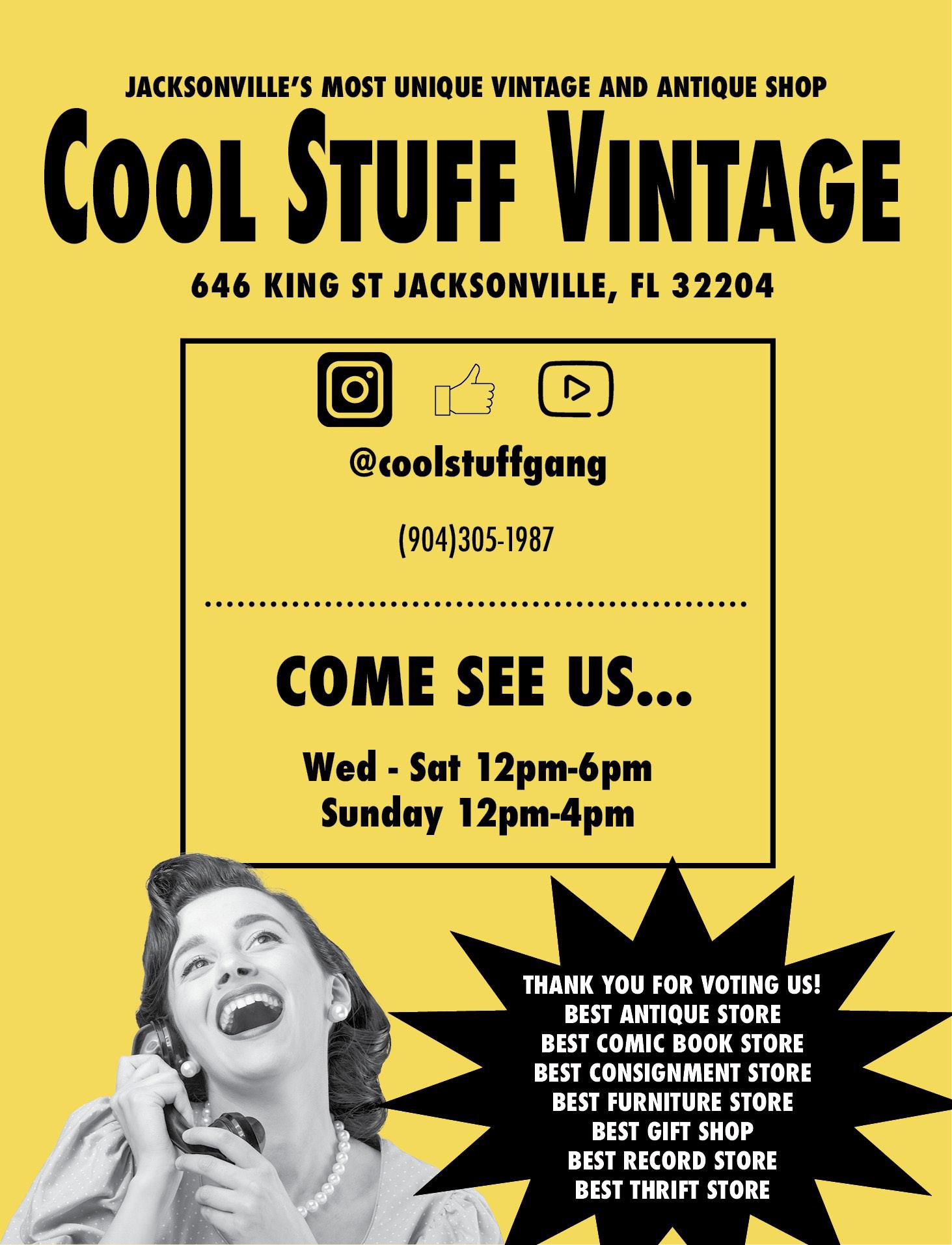



THEY LOVE ME, THEY LOVE ME NOT …
Remember when relationships started by taking someone out on a first date, then a second, a third, maybe a fourth and then taking that next step? (You know what I’m talking about.) Well, me neither.
At a certain point, the dynamics of dating experienced a significant shift, a 180, if you will. In the past, the more personal and nerve-wracking aspect of new relationships was getting intimate with someone — physically. However, nowadays, the mere thought of going on a date has taken on a more intimate and somewhat intimidating quality. It seems like we might be skipping essential steps in building genuine connections. While there’s nothing wrong with having a bit of fun, our generation’s approach to establishing meaningful relationships seems somewhat reversed. It’s as if the norm is sex first, sex again, sex a few more times, and then, only then, maybe consider having a proper first date.
There is absolutely no shame in the game. If you are uninterested in relationships and just want to go out and get your groove on, more power to you. But for those who crave something more but can’t seem to find it, let’s discuss why that might be. And I’m no expert on relationships, so please take my unsolicited advice with a grain of salt, yeah? (Author’s note: Seriously, you should strongly consider any advice I have to give considering I got dumped while writing this article. Yes, I really did. … Happy Valentine’s Day!)
Words by Carmen Macri
For starters, the societal acceptance of sex has changed. As society becomes more open about sex, some people are finding themselves straying from relationships. With the stigma around sexual exploration lessening, there’s this sense of freedom that can lead people to seek experiences outside of committed partnerships. Plus, with social media and dating apps making it easier to connect with others, the temptation can be hard to resist. While it’s great that we’re becoming more accepting of different relationship dynamics, it does pose challenges for traditional monogamy.
Social media and dating apps have truly revolutionized how we approach relationships. They offer the convenience of instant gratification, often leading to the rise of hookup culture and the fall of commitment. With just a swipe, you can find yourself matched with someone and engaged in conversation within moments. While this immediacy can be thrilling, it also fosters a more casual attitude toward relationships.
It’s a double-edged sword — while the abundance of options can be empowering, it can also result in more superficial connections. To the extent that this generation has introduced a new concept to describe the transitional phases before formal dating: the “situationship.” In a situationship, two individuals are exclusively involved but opt not to define their relationship with traditional labels like boyfriend, girlfriend or partner. They engage in all the activities of couples without the constraints of official titles. (Why? I have no idea). These days, it’s typical to spend a month dating before formalizing a relationship, but some situationships can last for months or even years without ever taking that final step.
It seems silly, really, to be dating someone without actually dating them. You receive the perks of a relationship without dealing with its downsides — which tend to make a relationship grow stronger. But, again, what do I know?
31
Not even a full month into the year and there have been three school shootings across the country. The Gun Violence Archive has documented 32 mass shootings up until January 28th, with more coming in every day. With that math we’re on track for at least one shooting a day. Twenty-seven days into the year and at least 54 victims have been killed from gun violence, even more injured. Three killed outside an apartment complex in North Carolina; six bodies found near a highway in California; a block party in Katy, Texas left three dead; in one night five people were killed in two separate shootings in Maryland; multiple students and administration injured, two left dead, in a shooting at a high school in Perry, Iowa.
Just to name a few.
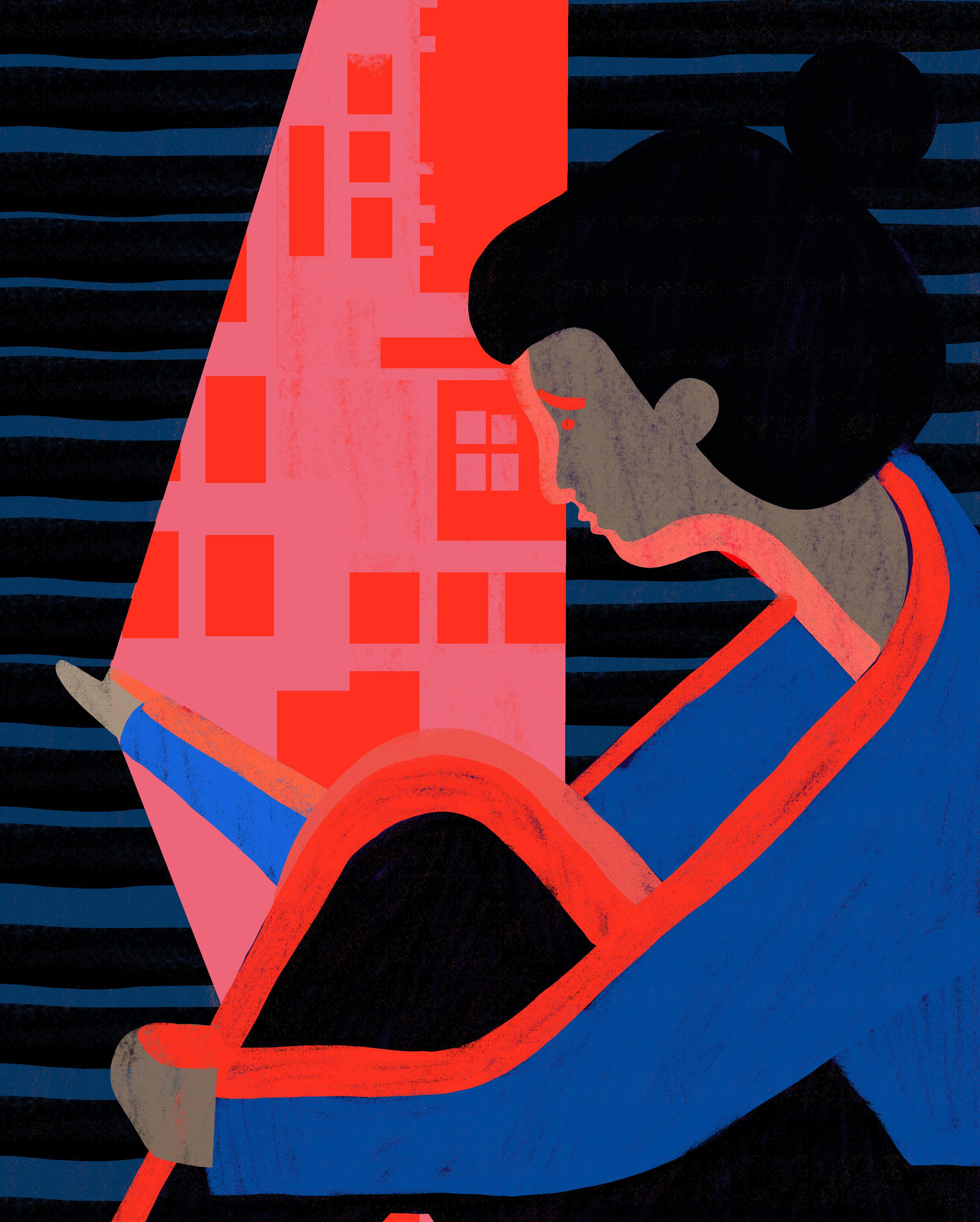
INNOCENCE STOLEN, FEAR RISES: MASS SHOOTING ANXIETY MARKS A GENERATION
Words by Mallory Pace
This age of mass shootings has caused the most unsuspecting of places to be some of the most dangerous. It’s no wonder a quarter of Americans have changed their lives due to this fear. A 2019 survey by the American Psychology Association found that 79% of Americans reported feeling stress over the possibility of a mass shooting occuring and 33% said they have refrained from going to certain places due to this fear.
What makes mass shooting anxiety particularly frightening is that these events are occurring in places we would never associate with violence, explained Sherman Lee, associate professor of psychology at Christopher Newport University in Virginia. It’s a powerful part of our experience that causes people to stress and live a limited life, he said. Lee has taught a class on death and dying for almost seven years, and he pondered on how the section on mass shootings, what used to be one category, now has its own subcategories, even broken up between elementary and high school shootings. That’s how increasingly prevalent and tangible these events have become, even in the last few years.
You don’t have to have come close to a mass shooting to have this kind of anxiety: The influx of media about shootings is all around us. Lee suggested we’re bombarded with such information in an imbalanced way because people usually gravitate toward scary things, so we get fed a large, unhealthy dose of scary news. It’s such an unfortunate part of our society that we just can’t seem to get away from, and obviously, it affects people in catastrophic ways, whether it’s being a victim or the mere fear of it taking over one’s ability to live.
Lee has conducted extensive research into the intersection of anxiety and issues like mass shootings and COVID-19. Similar to the work he did with pandemic anxiety and grief, Lee conducted a study with the objective to create a five-item scale used to decipher how much an individual struggles with mass shooting anxiety and whether they should consider professional help.
“I wanted to create a kind of, we call them screeners, to identify some symptoms of that fear that a counselor can use or even anyone,” Lee said. “We all want to know ‘Is my anxiety normal and where’s the line?’”
Surveying 759 adults, Lee identified the five most representative signs of people truly suffering with mass shooting anxiety. The first is a physiological expression — appetite change. If the thought of a mass shooting either immediately decreases or increases one’s appetite, it’s a sign of elevated fear and that the body is responding in a fight or flight mode, Lee explained. The second, also related to a fight or flight bodily response, is experiencing physical symptoms like sweating and an increased heart rate at just the thought of such an event. The third is a cognitive symptom — having dreams about mass shootings. Lee explained if someone’s preoccupation is so heightened with the idea of a mass shooting that it’s being carried into their sleep world regularly, that’s a useful distinction between a casual and serious concern. Another cognitive symptom is if someone often mistakenly hears gunshots in loud noises, it shows they’re especially preoccupied with that fear.
“Because what happens if you’re really afraid of something, you’re what we call hyper- vigilant,” Lee said. “Your senses are scanning the environment to the eyes and the ears, but in this very distorted way, but it’s really just looking for that danger.”
The last symptom is a behavioral expression — if someone finds they’re just staying at home and avoiding certain activities or places out of fear, that might be a sign to consider professional help. Lee said anxiety feeds itself by avoiding the thing it’s afraid of. Yes, you’re technically safe by staying at home, but you’re still going to be anxious and afraid because it just feeds itself as your world gets smaller. You can’t live a fulfilled life in fear and anxiety being stuck at home, he said.
There is a slim silver lining, however, to experiencing this kind and extent of anxiety where you’re unable to leave the house. Therapy and treatment can be done from home and many studies point to internet-based therapies being just as effective as in-person. Published in the Nature Mental Health journal, a recent U.K. study of over 27,500 patients found that online therapy has a “dominant incremental cost-effectiveness ratio relative to standard care, offering similar clinical effectiveness but with shorter treatment times,” the report said. If someone wants to be treated for their anxiety, there are a lot of ways to make it happen.
Movie theaters, shopping malls, schools, public parks, concerts, churches, restaurants — all places we go unassuming something terrible is going to happen, yet they’ve all been the site of mass gun violence. The country’s history of mass shootings has become a twisted part of society, a very real fear now engraved in our brains and in some cases, the fear determines or debilitates someone’s ability to live their life. Nowhere is safe anymore, and that’s hardly an exaggeration. Since 2020, each year has ended with over 600 confirmed mass shootings, (Gun Violence Archive, 2023).
Being on edge or constantly planning escape routes in every place we go has become a routine and even an encouraged habit to practice. Don’t let your guard down, face the front entrance when you can, be aware of all exits, keep your eye on shady movements, see something, say something. Mass shooting anxiety is something that will negatively mark this generation, Lee explained, similar to how the pandemic, 9/11 and the Iraq War has left its mark on current and previous generations and their anxiety. Generations before, students were doing drills out of the possibility of an atomic bomb. Point being, anxiety isn’t a new concept but the reality of mass shooting anxiety is unique to this age of mental health.
“I think those are the two unfortunate tragedies [COVID-19 pandemic and mass shootings] that are going to mark a generation, and they too will have to deal with those issues as people dealt with 9/11 and Iraq,” Lee said. “I definitely think that’s going to be one of the cultural touchstones.”
Again, our era of the Internet, social media and quick connections hold the potential to provide real clinical help to those struggling. Generations before us didn’t have the same luxury, even in the cultural sense of mental health and stigma behind it. The resources at our fingertips are abundant when compared to generations before us. Even still, mass shooting anxiety is a very real fear and something that has become a constant worry in most Americans’ lives. No matter the level or extent of how this issue impacts an individual, this is a fear that won’t be going away any time soon. Although you can’t let the fear of such an event prevent you from living your life, it can be hard not to when we’re never really certain of our safety.
33
CANVAS CHRONICLES:
MEET WENDY SULLIVAN, THE ARTIST WHO MADE THE STARRY NIGHT OUT OF HAIR EXTENSIONS
Words by Su Ertekin-Taner
Artist Wendy Sullivan’s house and barn are full of bins. Unlike the uber-organized parent or the halfway-moved homeowner though, Sullivans bins don’t store the children’s newest baubles or appliances respectively. Her collection of plastic bins are not household treasures at all — and especially don’t lend themselves to the household part of that phrase.
Instead, Sullivan’s bins hold used takeout containers, discarded textiles, nostalgic chunky telephones a couple decades past their prime, straws and chopsticks, computer parts, dismantled musical instruments, rusty tools, Happy Meal toys, and one particular metal fan grill that she adventurously won from the Argyle Forest roadside at a red light. These bins house the tools of Sullivan’s characteristic assemblage style. She calls them her “collection of junk” though the bins are as organized as those of our theoretical uber-organized parent, though most collectors wouldn’t dare categorize their trinkets in this way.
As with any collection of junk, there is this accompanying notion of dormancy (i.e., most collectors choose to display or at least affectionately hoard, not repurpose the collected items),0 and Sullivan indeed has those odd “waiting bins,” or bins whose items she hasn’t gotten around to using. But Sullivan’s collection is active and alert like her mind. (In fact, the artist tells me she’s a perpetual scavenger who has even memorized the bends in the road where objects are bound to have tumbled.) Her collection shifts, transposes and moves according to her latest fixations. It is added to and subtracted from always. Why this subversion of stillness?
Sullivan isn’t a hoarder or displayer — never has been — though, her heaps of stuff convince us she’s falling in that direction. She was always an active repurposer because she wasn’t raised with a cavalier, buy-and-display or useand-discard approach to material. The bedrock of her childhood relationship to materials was more of a buy-and-intentionally-use principle: “The way I was raised, I grew up, we didn’t have a whole lot and so we learned you make do with what you have, and you made things with what you had. That’s what mom would do,” the artist said, adding that, in 2016, “I became invested in the idea of using something that’s already had a life and giving it another one.”
This now perennial process of repurposing and reworking is an exercise in symbology. The phrase reversal “forgotten but not gone” is the impetus of her assemblage work. Her work makes an enemy out of the word “gone” — the single syllable gripe is commonly uttered by those perpetual customers living in the height of excess.
“We move onto new technology, so we toss that item. Forget about it, but it isn’t gone. We threw it in the trash. It’s out of sight, out of mind, but it’s not gone. It’s still out there somewhere. In a landfill, in someone’s garage because they couldn’t bear to throw it away. They didn’t want to waste it, or it’s in a thrift store because they donated it, but it’s still not gone. Even when it’s in a landfill covered by layers of dirt, it’s still not gone. It’s just forgotten. And we just move on to the next iPhone or the next watch or the next outfit that we bought,” she said. “I really feel like my work, every piece that I make hits that theme of purchasing things and what happens to them later. What happens to them when you’re done with them.”
Sullivan achieves her critique on accumulation by visually emphasizing her own personally accumulated items: She assembles her bin baubles with a focus on shape. Her shape-cognizant art takes inspiration from tramp, matchstick art and sculptor Louise Nevelson’s conceptual pieces. The repetitive quality and gridlike item placement of Sullivan’s art, for example, imitates the matchstick patterned boxes and picture frames of tramp art. And much like Nevelson’s motley association of New York street furniture, Sullivan’s art is washed in black and/or white color to emphasize the structure’s contours: “Suddenly the shapes are the forefront. That’s what I want.”
Though her occasional wood pieces — adorned with keys, nails and other rusted estate sale finds — lack this color wash, they are not incongruous. Instead, it’s the sepia color that harmonizes the piece. “Sometimes, I find a piece…I can’t bear to put white paint on them. The harmony in those comes from sticking to that aged tone,” the artist said.
“Good Hair Night,” one of her most recent pieces, deviates from these usual artistic practices. When Jacksonville’s FemArt organization, a nonprofit committed to exhibiting women artists, commissioned a Sullivan piece for their “Hair” exhibition, the artist was all but stumped. A return to one of her old haunts — the thrift store — reanimated the artist.
“In some of the thrift stores, they have hair extensions. So I thought I could use hair extensions, and I started thinking well you can take the braids and you could make swirls and swirls would be neat and then all of the sudden those swirls in Van Gogh’s “The Starry Night” was what I was thinking. And then I realized some hair extensions are real fluffy and look like tufts coming up [...] I started thinking I could recreate “The Starry Night” using hair extensions and so I did,” she said.
34 Folio Weekly
“We move onto new technology, so we toss that item. Forget about it, but it isn’t gone. We threw it in the trash. It’s out of sight, out of mind, but it’s not gone. It’s still out there somewhere. In a landfill, in someone’s garage because they couldn’t bear to throw it away, they didn’t want to waste it, or it’s in a thrift store because they donated it, but it’s still not gone. Even when it’s in a landfill covered by layers of dirt, it’s still not gone. It’s just forgotten.”
Although “Good Hair Night” had all the trappings of a signature Sullivan piece — a process-catalyzing thrift store trip and a focus on shape and form — the artist had never reworked a famous piece, just individual items. But after some concept sketching, intense wig wielding and (over)painting the cheeky “The Starry Night” parody emerged.
Since that exhibit in January 2023, Sullivan has been doing what can only be described as what one can expect an assemblage artist to be doing. That is, wistfully watching abandoned car parts pass her car by on the Buckman Bridge, occasionally swinging around bends known for their roadside treasures, hanging around garage and estate sales and, of course, assembling. Assembling, reassembling and shifting in that active, spirited way required of her medium until, she said, “It clicks into place and you’re like, ‘yeah, yeah. This is it. This feeds my soul. This lights up everything.’”

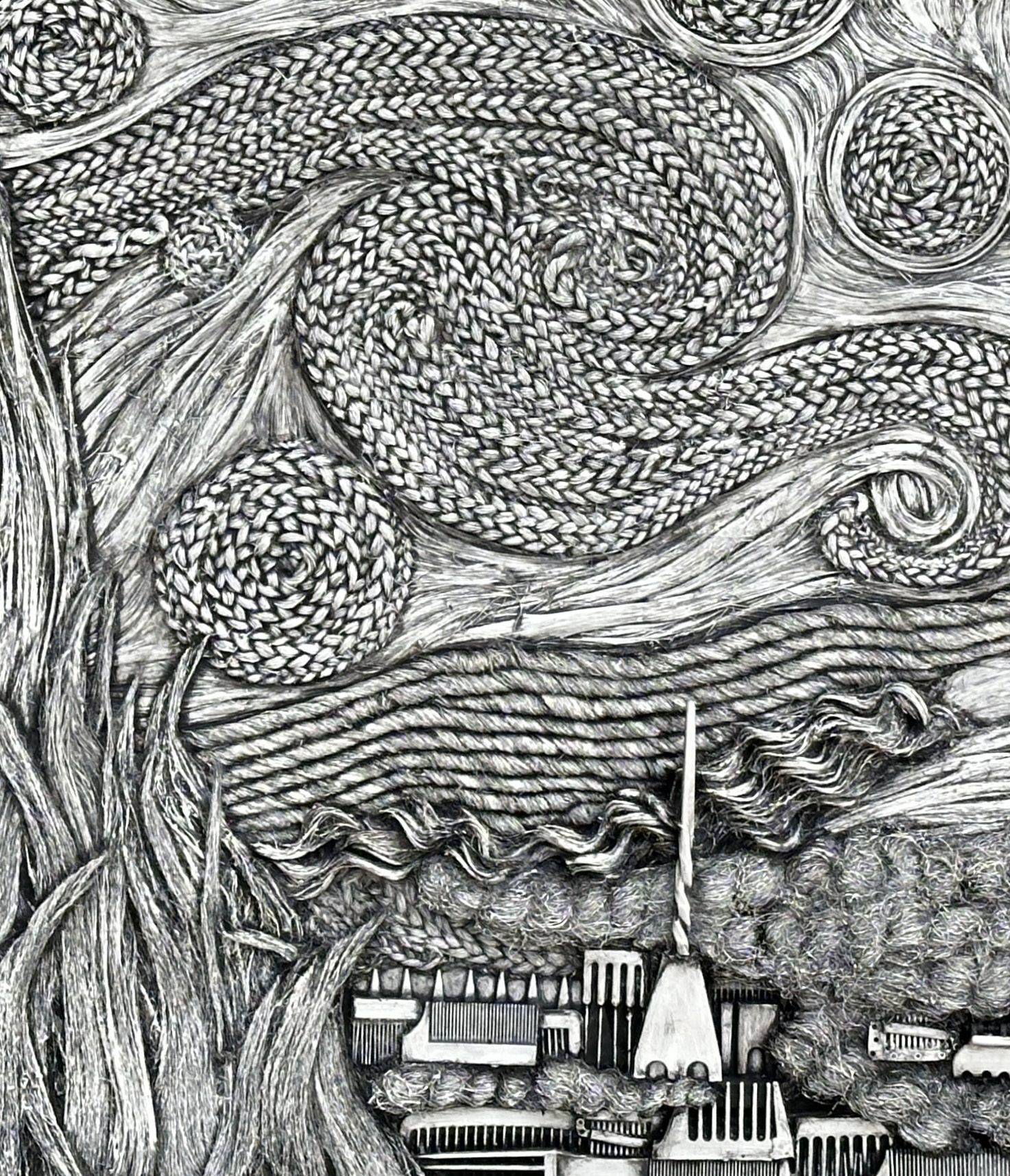
35
Photo by Max Meadows
Photo by Max Meadows

The girls discuss old sayings and what they mean now.
Words by Ambar Ramirez and Carmen Macri
CARMEN: When editing a recent article, our copy editor Kerry Speckman was a bit confused when the writer referred to someone’s actions as “out of pocket” since her definition of the term made no sense in that context. When she asked us about it, we explained that it meant someone did something or said something (a little crazy) out of nowhere.
AMBAR: This then led us to be confused as to why she was confused. Since when did “out of pocket” mean anything other than causing chaos by saying untimely remarks? Well, it turns out that back in the day, the term “out of pocket” was used to express being broke or unavailable.
CARMEN: Obviously, this sent us down a rabbit hole of finding words or sayings that once meant one thing and now mean something completely different. The first one we found was “awful.” I know what you’re thinking … how could “awful” mean anything other than the worst … well, back in the day, the term was used to describe things being “worthy of awe.” When we, as a society decided to make the switch, is beyond us.
AMBAR: “Running amok” didn’t always mean wild or erratic behavior; it originally had a more serious meaning. Picture this: 18th- and 19th-century European travelers stroll into Malaysia, only to witness seemingly ordinary tribesmen turning into accidental horror movie extras, unleashing brutal and random chaos. Of course, it ended up being a very normal mental condition that is still diagnosed to this day. But we’ll keep using the term for when we have one too many at the bars.
CARMEN: Here is another fun one. What do you think of when you hear the term “church bells ringing”? I think of love being in the air. I think of meeting someone and hearing the “church bells ringing” referring to future wedding bells. Well, that was not always the case. It used to refer to a chatty woman, specifically, a lovely lady who likes to yap, specifically during church sermons.
AMBAR: Recently told somebody that they’re barking up the wrong tree?
CARMEN : I am constantly barking up the wrong tree :(
AMBAR: Yeah, well, aren’t we all? Back in the early 1800s, “barking up the wrong tree” literally meant a hunter’s dogs were pointing out the wrong tree. Now we use it to tell someone they are taking the wrong action because their information is incorrect. Ah, the good old days of simplicity in both society and language.

5.18.24 6PM

PRESENTED BY

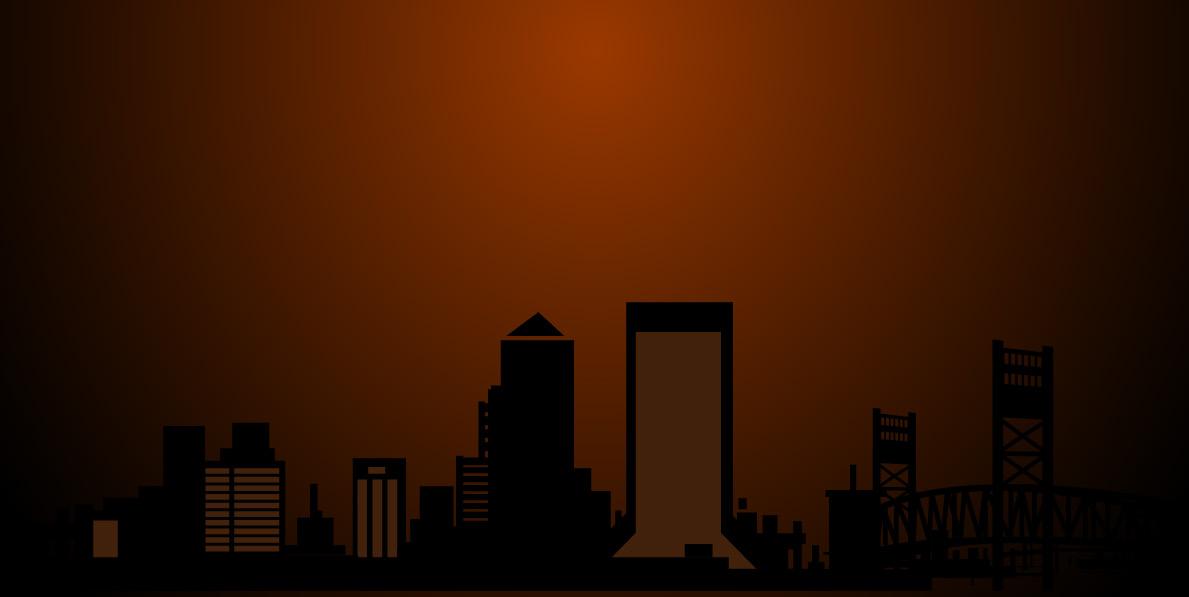
MARCH
5
7
TUBMAN AND THE UNDERGROUND RAILROAD FOR SCHOOLS
8 LEGENDS OF THE BILLY JOEL BAND
– THE LORDS OF 52ND STREET - LIBERTY DEVITTO & RUSSELL JAVORS
9 ZACH WILLIAMS
10 EXTREME - WITH SPECIAL GUEST LIVING COLOUR
11 GINO VANNELLI
12 THE TEMPTATIONS & THE FOUR TOPS
13 THE BRAD “SCARFACE” JORDAN BEHIND THE DESK EXPERIENCE
14 MIKE BIRBIGLIA
15 GET THE LED OUT
16 KOUNTRY WAYNE
17 THE CANCELLED PODCAST TOUR WITH TANA MONGEAU AND BROOKE SCHOFIELD
21 AIR SUPPLY
22 TOM PAPA PONTE VEDRA CONCERT HALL
22 LITTLE RIVER BAND WITH THE JACKSONVILLE ROCK SYMPHONY ORCHESTRA
23 HOTEL CALIFORNIA: A SALUTE TO THE EAGLES
24 DANIEL TIGER’S NEIGHBORHOOD LIVE
APRIL
2 THE JUNGLE BOOK FOR SCHOOLS
3 ASHLEY MCBRYDE - WITH SPECIAL GUEST MEG MCREE
4 SWAN LAKE
5 SCOTT BRADLEE’S POSTMODERN JUKEBOX
6 ORCHESTRA NOIR
7 THE CLASSIC ROCK SHOW
11 THE GUESS WHO
12 ETTA MAY AND THE SOUTHERN FRIED CHICKS
13 THERESA CAPUTO
15 ROSIE REVERE, ENGINEER & FRIENDS FOR SCHOOLS
16 BRIT FLOYD
17 RODRIGO Y GABRIELA
18 DON FELDER FORMERLY OF THE EAGLES WITH SPECIAL GUEST PABLO CRUISE & FIREFALL
19 JEREMY CAMP
20 THE FLAMING LIPS
21 AMY GRANT
22 LEONID & FRIENDS
24 THE PSYCHOLOGY OF SERIAL KILLERS
25 HANNAH BERNER
27 YELLOW BRICK ROAD – A TRIBUTE TO ELTON JOHN
29
31
JUNE
4 CELTIC THRONE
6 HAPPY TOGETHER TOUR 2024
7 ALI SIDDIQ
22 NATE JACKSON
11 UNTOLD STORIES JULY
AUGUST
17 MAGIC MEN AUSTRALIA



36 Folio Weekly
Floridatheatre.com 904-355-2787 128 E. Forsyth St. Jacksonville, FL 32202 BUY TICKETS ONLY AT THE FLORIDA THEATRE BOX OFFICE AT 25 LORD OF THE DANCE 25TH ANNIVERSARY 26 JOE SATRIANI & STEVE VAI 28 NEIL DIAMOND CELEBRATION 30 JOEY FATONE AND AJ MCLEAN: A LEGENDARY NIGHT ON SALE NOW
CAT KID COMIC CLUB FOR SCHOOLS
KENNY G
EMO ORCHESTRA
ONE NIGHT OF QUEEN
JDT’S ANNUAL SPRING REPERTORY CONCERT
JIM BREUER
3
4
7
8
11
12
AN EVENING WITH LEE ASHER
UNTOLD STORIES
30
TAY TAY LASER PARTY - FEATURING DJ SWIFTIE MAY
STEVE HACKETT
GRUPO NICHE
BRAD WILLIAMS
1
2
3
ZZ TOP
PINK MARTINI
6
HARRIET
CARMEN: OK, how about Y2K? When I, being Gen-Z and all that, hear the term, I think of the year 2000 and the trends it started. I think of low-rise jeans, flip phones and glitter everything — as most Gen-Zers do. But, if you ask a millennial or anyone over the age of 28, Y2K stands for the mass havoc that was spread due to a computer programming problem that was expected to create all kinds of chaos once the new millennium began. People genuine ly believed the world would go into a total blackout once the ball dropped in 2000.
AMBAR: And it just keeps getting better. The hangover cure term “hair of the dog” has a medieval origin. It was said that if you were bitten by a rabid dog, the victim would be cured by applying the same dog’s hair to the wound. Doesn’t sound like the best solution but neither does drinking more alcohol when you’re hungover.

CARMEN: I am a firm believer in “hair of the dog.” There is nothing like four Bloody Marys the morning after to cure a disgusting hangover.
AMBAR: Listen, if it works, it works. Who am I to deny facts?
CARMEN: Once you get past the initial gag reflex to the smell, it’s smooth sailing.
AMBAR: Which also applies to all of this talk about modern-day slang having meant something else entirely back in the day. Once you get past the idea that we will constantly be coming up with new meanings for words that al ready have definitions, everything will be (as Carmen put it) smooth sailing.
“You’re out of pocket.”

“I’m Broke?”




MORE INFO & TICKETS AT JAXMUSIC.ORG Doors at 7PM Jay Myztroh & Friends at 8PM Brandee Younger at 9PM JME PRESENTS LIVE ON THE WJC T with Jay Myztroh & Friends SCAN HERE MAR 14 | 7PM















TARGETED TREATMENTS RAPID RECOVERY 904-549-5647 gobiotarget.com
Annabella suffered a meniscus tear but thanks to Injury Care Centers & our Biotarget Therapy she was back on the field in only 3 weeks.
dear dumbs
Dear Dumbs,
Finally on YouTube, I see. Congrats! I really love the visual addition to the show.
I’m a 36-year-old gay man, and I’ve always had straight women come onto me. It happens all the time. Granted a lot of these women have no idea I’m gay until they push it too far and then I have to out myself. On quite a few occasions they didn’t take the news too well, and I never saw them again. But more often than not they seem to try harder.
Terry, you wouldn’t believe what they do and the offers I get. I’ve told some of my straight male friends the details and they are blown away. It’s a side of women I never thought existed. My first question is to Shari, what’s going on here? You would think that woman would be more in tune with being put into these uncomfortable positions. Do you actually think you can change a gay man’s orientation?
Now for you, Terry, is there any better way to turn these ladies down?
Ian L. Mobile, Alabama
TERRY: First off, thank you for thinking I’m to your level of opportunity. I need to know a couple of things first. What exactly are they saying to you? And … can I have a moment alone after you tell me?
SHARI: I have to admit, I’m interested in hearing some of these “offers.”
TERRY: I think it would just make me jealous. I wonder how many guys have pretended to be gay just to get closer to the girl of his dreams.
SHARI: Are you writing some after school movie or something? Let’s help Ian.
TERRY: You’re right. I still need the details.
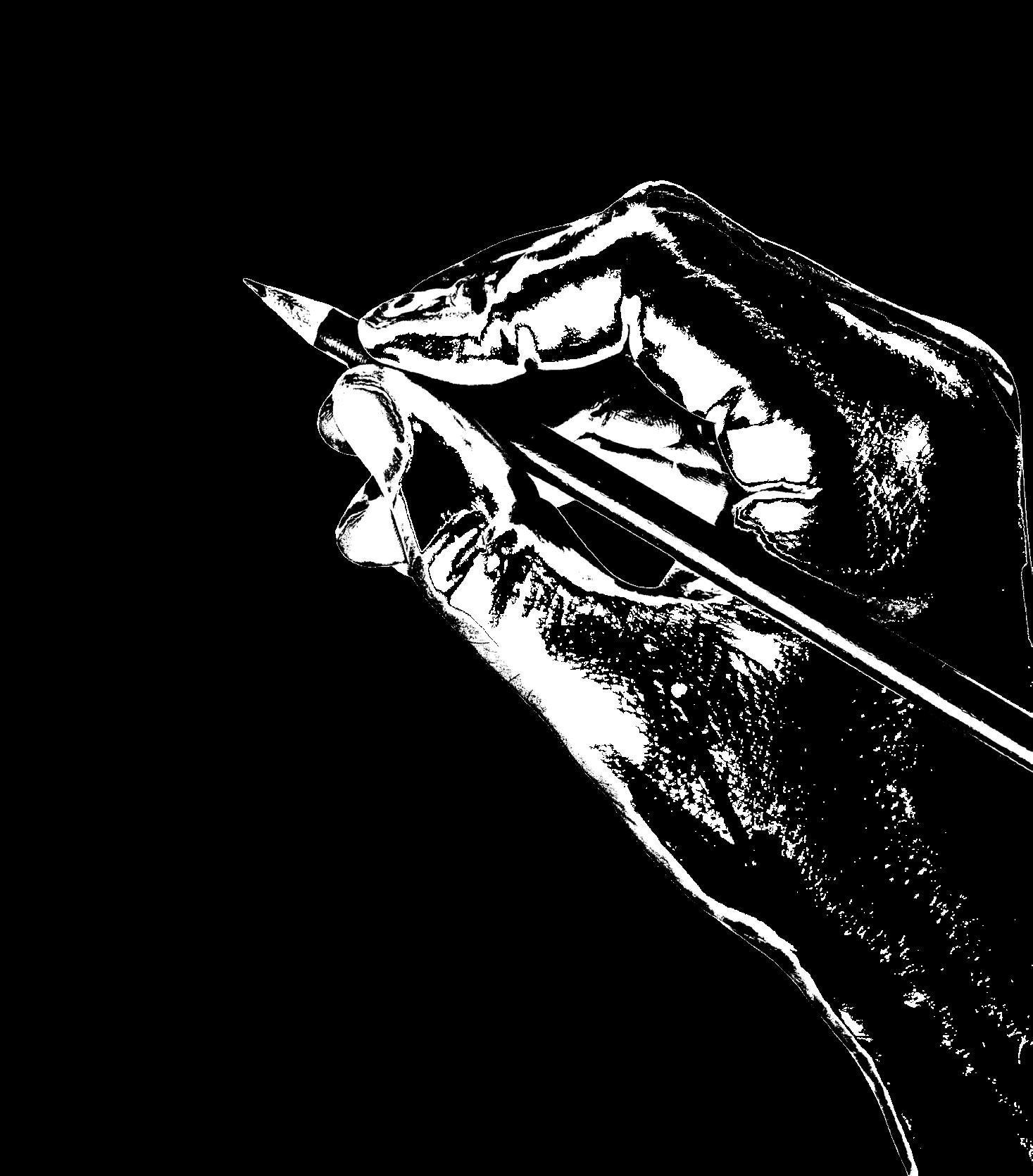
SHARI: I am one of those women who has a few close gay male friends, and it is a different kind of friendship. I have girlfriends who dress and undress in front of their gay friends. That’s not my style, but it happens a lot.
TERRY: Do you hear that guys? When your partner says they are hanging out with their gay friend, they don’t have clothes on.
SHARI: Anyway, Ian, I think it shows a lack of respect if they know where you stand and still keep putting the pressure on you.
TERRY: I agree. It’s actually a little sad. How much of this is a beautiful woman turning on the charm because they’ve never been turned down before?
SHARI : It could be an ego thing. But the bottom line is that no means no … no matter your orientation.
TERRY : So it’s settled. They are horrible friends. And as turned on as I am by this, I have to say Shari is right.
SHARI: Ian, please send us a photo of yourself. I have to see what the fuss is all about.
TERRY: Hey!
39






41 1 2 3 4 5 6 7 8 9 10 11 12 13 14 15 16 17 18 19 20 21 22 23 24 25 26 27 28 29 30 31 32 33 34 35 36 37 38 39 40 41 42 43 44 45 46 47 48 49 50 51 52 53 54 55 56 57 58 59 60 61 62 63 64 65 66 67 68 69 70 71 72 73 74 75 76 77 A C L L M H C A B L H L B C M B N I M L H I N B H B A A I N Solve this puzzle like a regular sudoku, but instead of using numbers, use the letters C-H-A-M-B-L-I-N (for Chamblin Bookmine) to fill each row, column and box. A C H N M L B I L I B M H N A C C A M I N B H L N H L B A I C M B N C A I M L H H M I L C A N B I L N H B C M A M B A C L H I N Across 1 Forrest HS and JU basketball star who became president of the Orlando Magic 4 Tree juice 7 Jacksonville founder whose name is on a downtown bridge 12 Weaving machine 14 HBO alternative 15 “Shoulda listened to me!” 17 Opposed 18 Comics shriek 19 Hoot partner 20 He wrote: “An intellectual hatred is the worst.” 22 Deserve 24 Yulee winter hrs. 25 Cabinet dept. headed by Xavier Becerra 27 People who know better? 29 Round Table title 32 Hour follower 34 Director Ephron 38 Harmful downfall 40 Word before cord or column 42 Top-selling female recording artist of all time 43 Crab Shack guy 44 Recipe amt. 45 Online journal 46 UF frat letter 48 Replies to an invitation, briefly 50 Builder of the estate at Epping Forest 52 Slightly ahead 54 Rare 57 Frontman for Limp Bizkit 60 Pop’s pop 63 Clothes line 65 UNF URL ending 67 WPXC network 68 Sight for ___ eyes 70 Last place in the Southeastern Conference 72 Mournful 73 Troop group 74 Personal characteristics 75 Old college ___ 76 Middleburg VA Clinic concern 77 Sevensome Down 1 Skin-care brand 2 Muscle quality 3 Little bit 4 Jax-to-Miami dir. 5 Attention getter 6 Nintendo game name 7 “Pretty sure, yeah” 8 Smoky deposits 9 Everything 10 Wait in I-95 traffic 11 Apt anagram for “yeas” 13 16 21 No longer wooly 23 DVR button 26 Read quickly 28 Indian River State College cheer start: “Gimme ___!” 29 Ballroom dance 30 bestbet poker declaration 31 Get ___ (throw away) 33 Duval County Court perjurer 35 Where to watch News4Jax 36 Woodworking tool
Swiss peaks 39 Pooch’s exercise area 41 Lima’s land 43 Biblical prophet with a whale of a tale 47 Texans, on an EverBank Stadium scoreboard 49 Beach lotion abbr. 51 Finishes 53 Sends to the Florida House 55 56 Indian garb 58 Ignited again 59 Chat-room appointment 60 Essence 61 Jags cheerleading group 62 President of the Florida Senate (2014-16): ___ Gardiner 64 Meager 66 69 JIA gate info 71 Once around the track at Daytona International Speedway O T I S S A P I S A I A H L O O M S H O T O L D Y A A N T I E E K H O L L E R Y E A T S M E R I T E S T H H S M E N S A S I R O C L O C K N O R A A C I D R A I N S P I N A L M A D O N N A J O E T S P B L O G R H O R S V P S A L F R E D O N E U P U N U S U A L F R E D G R A N D P A H E M E D U I O N S O R E C E L L A R S A D U N I T T R A I T S T R Y P T S D S E P T E T
37



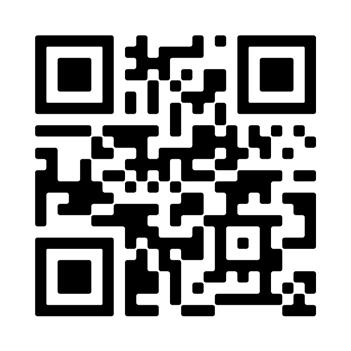

GET YOUR TICKETS NOW! GET YOUR TICKETS NOW! TICKET & SPONSORSHIP INFORMATION: (904) 496-0447 | KWATERS@JACKSONVILLE95ERS.COM












































































































